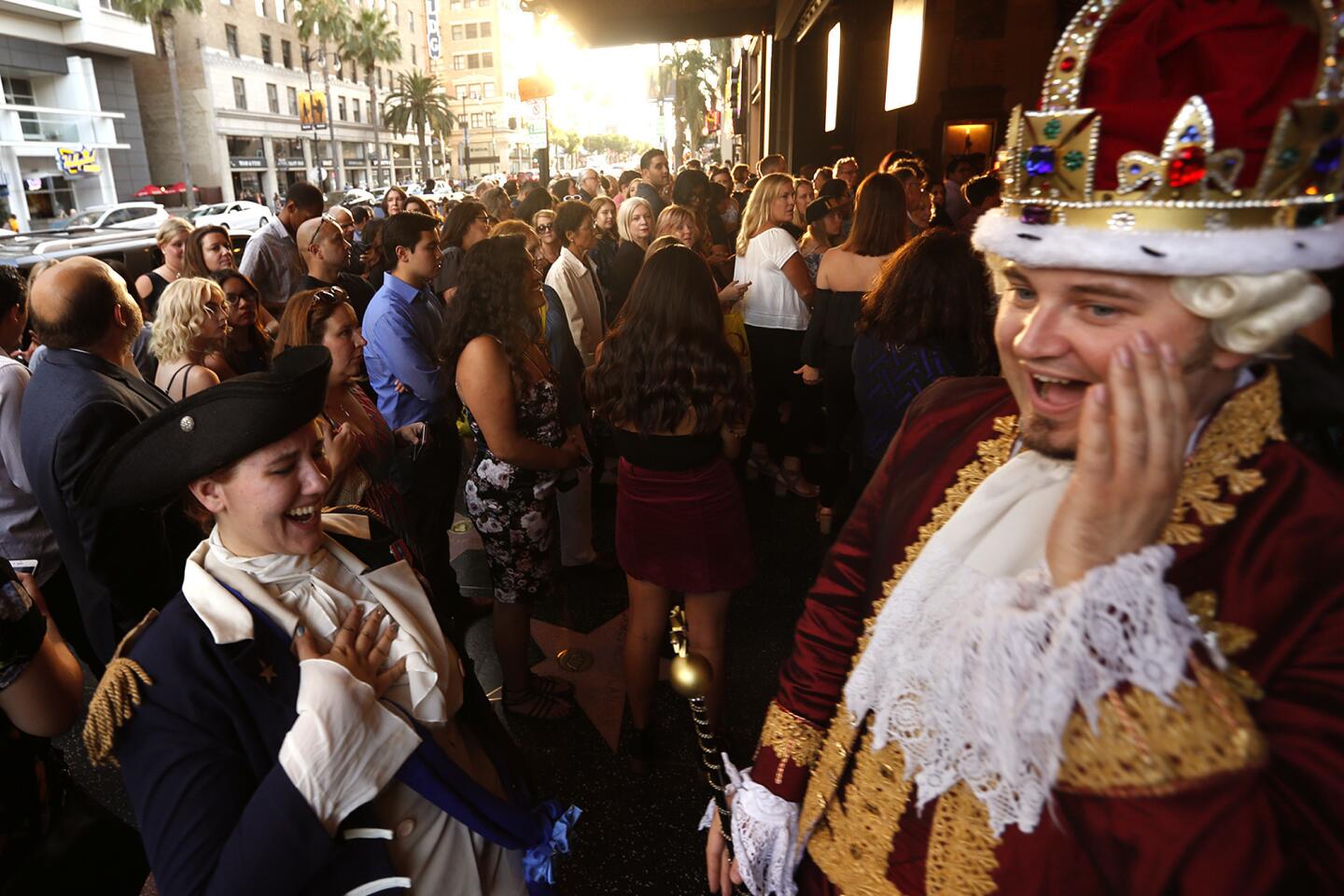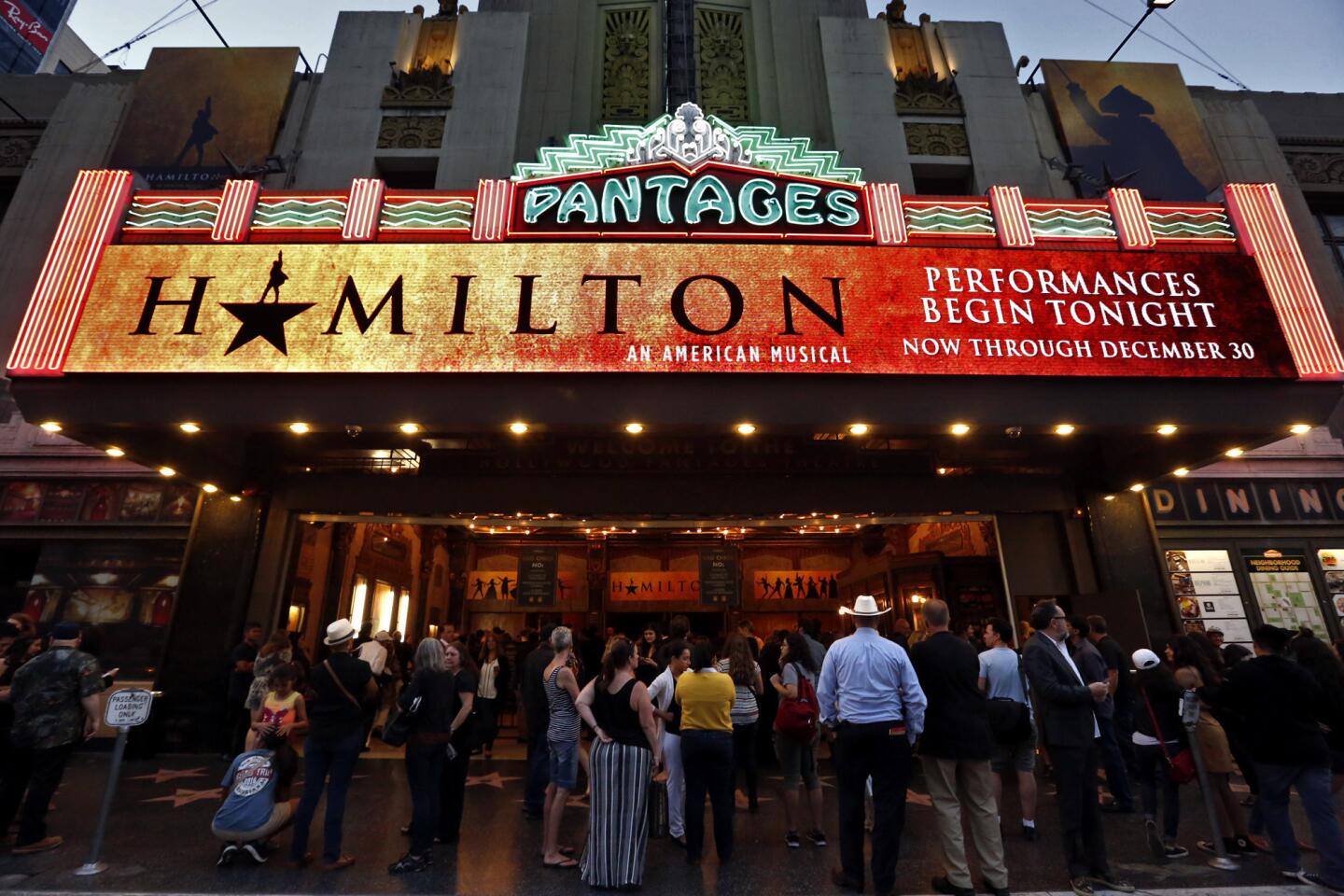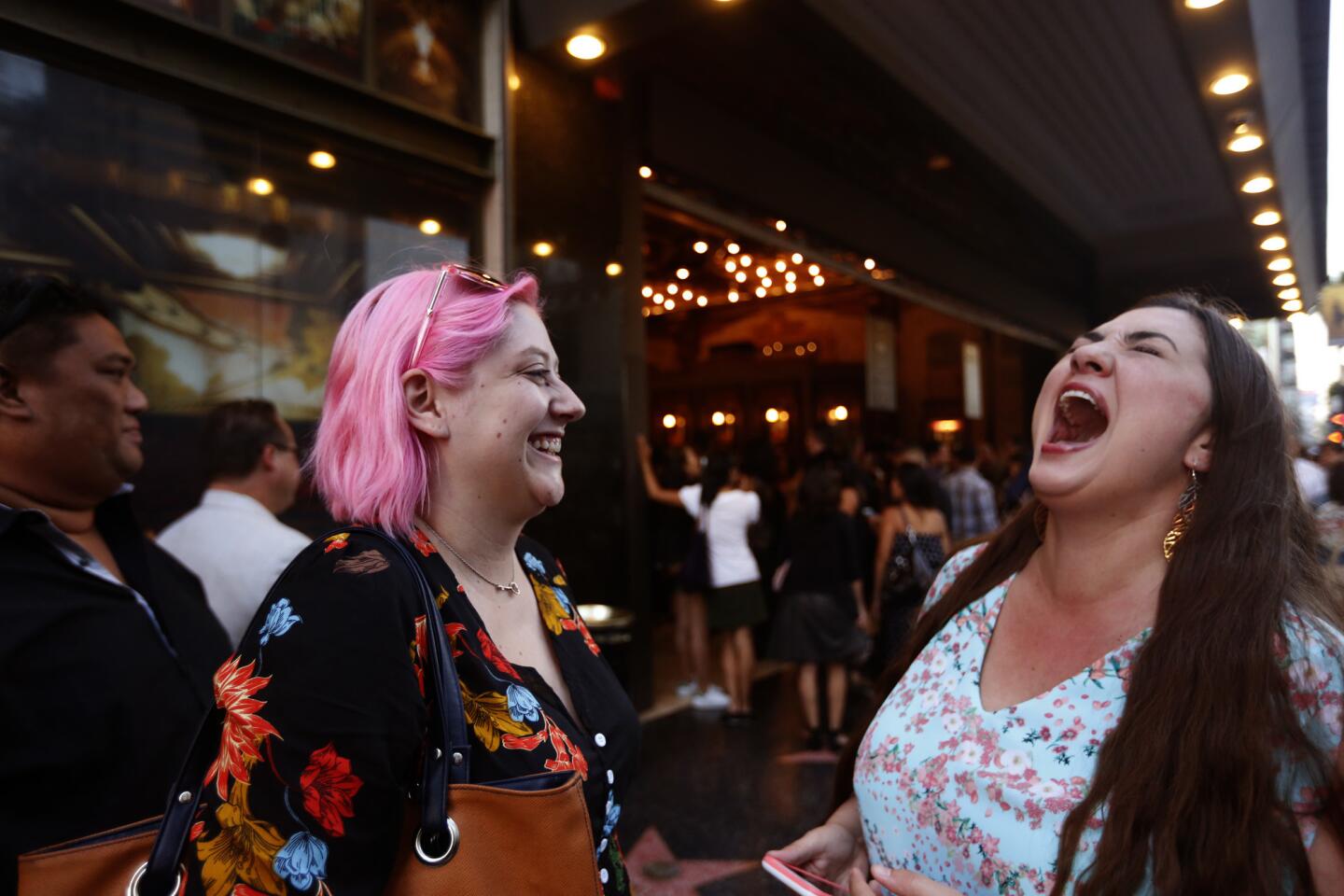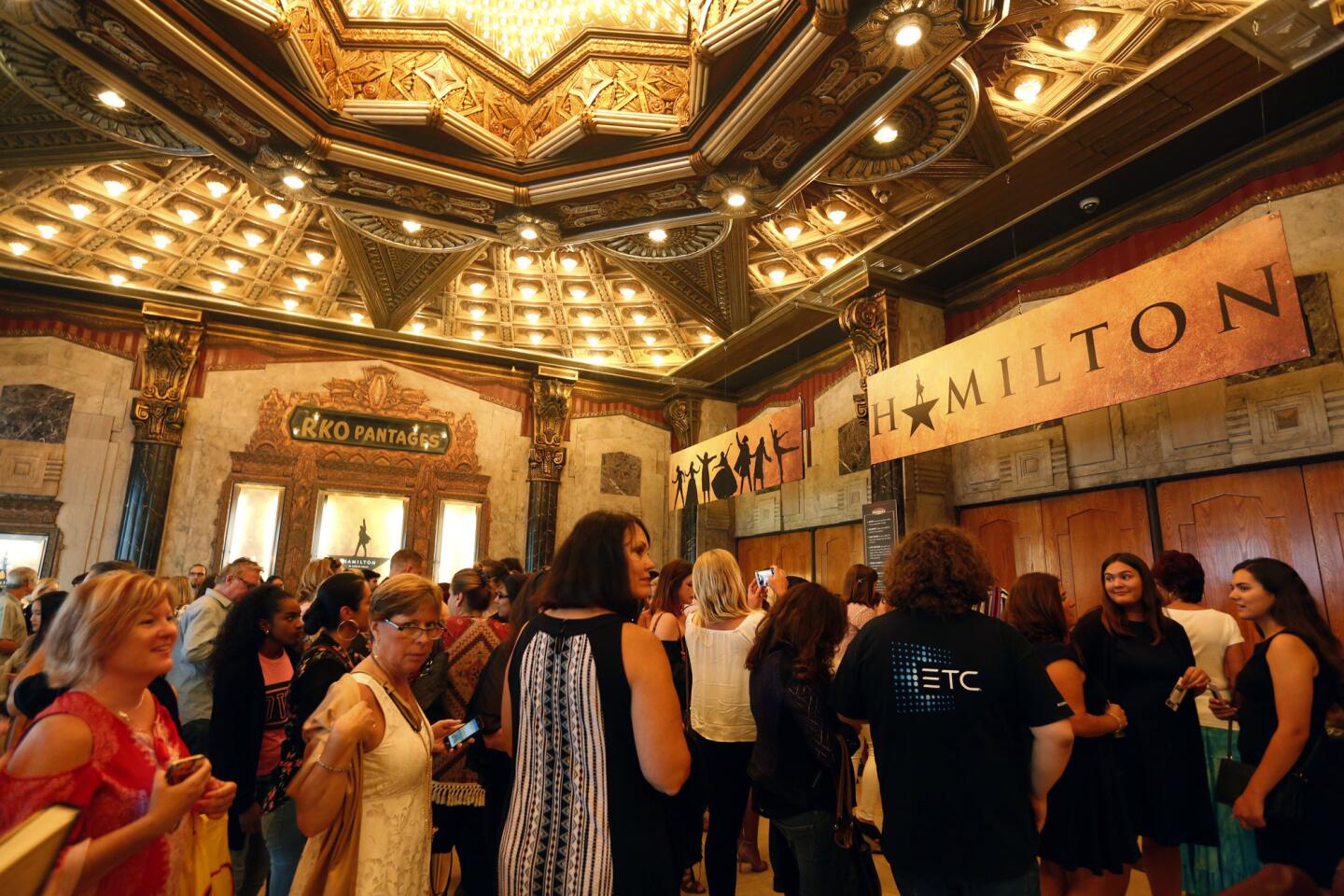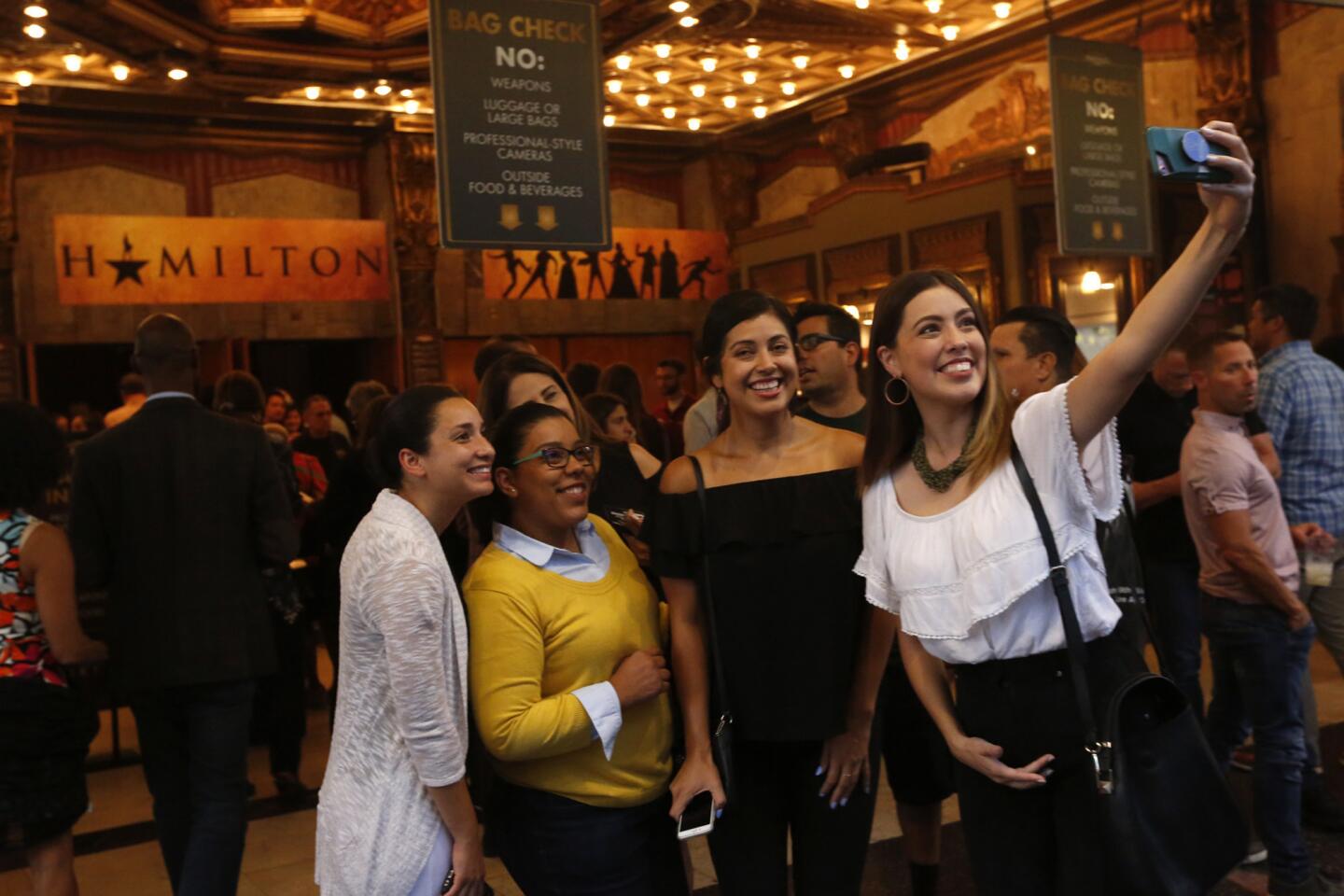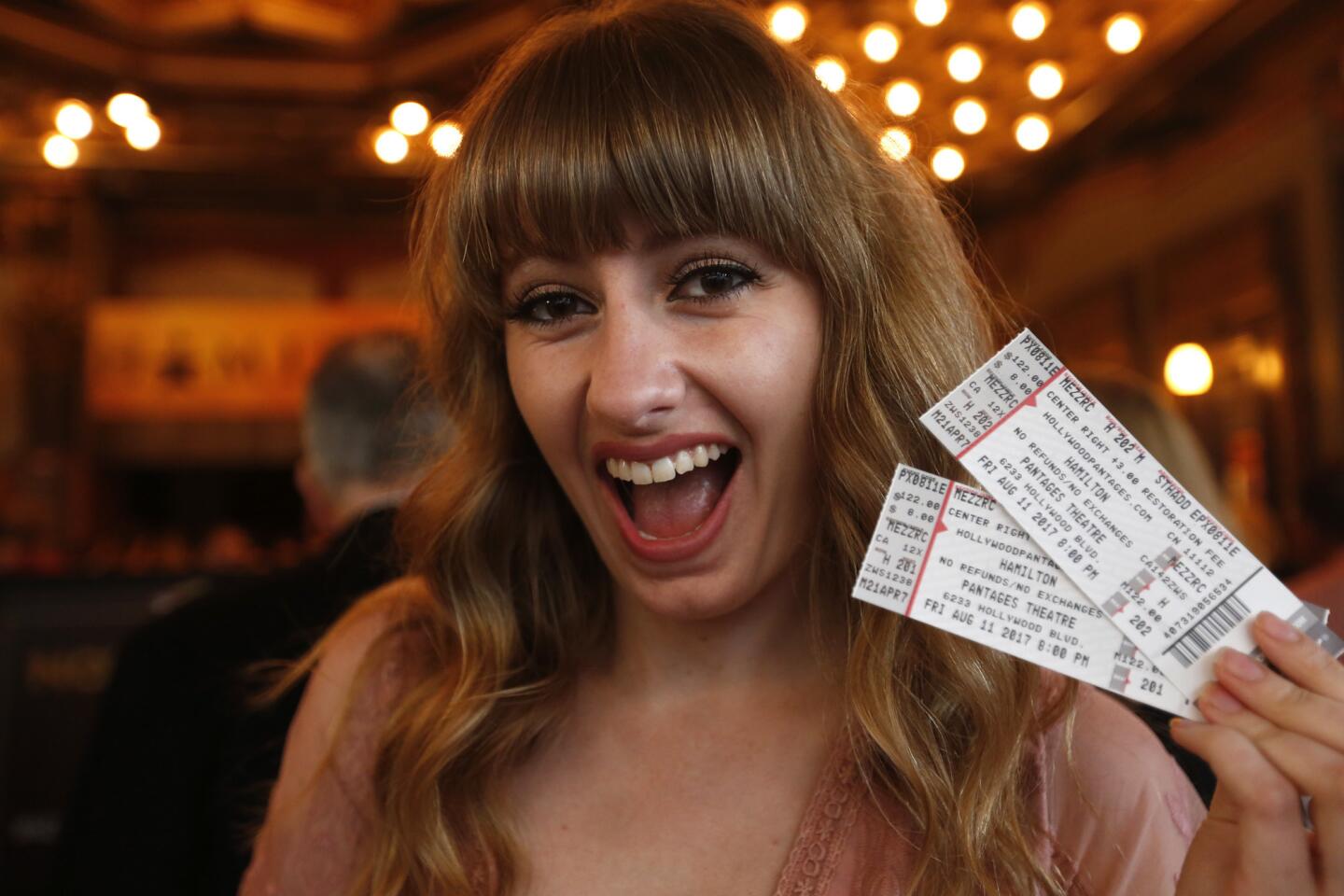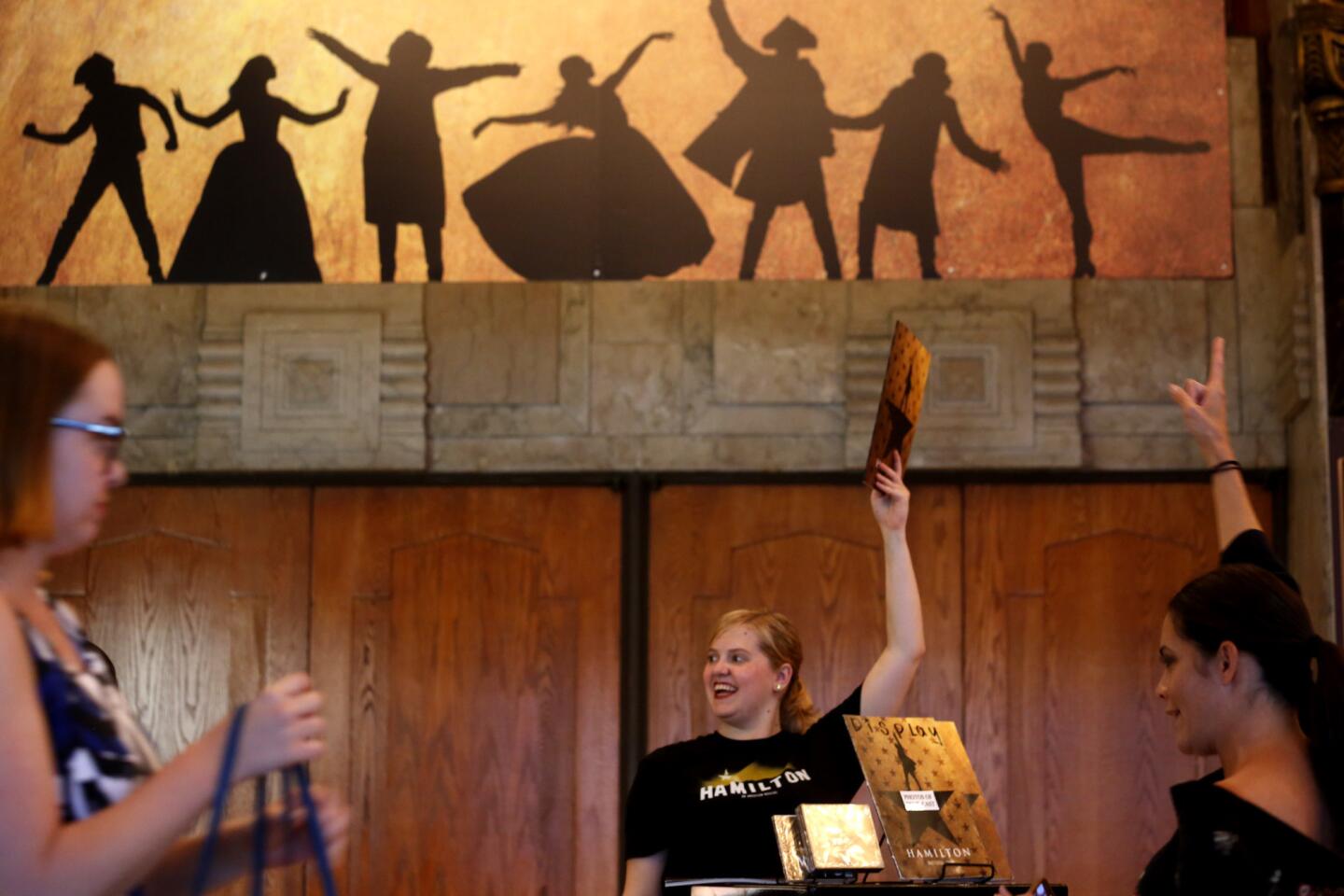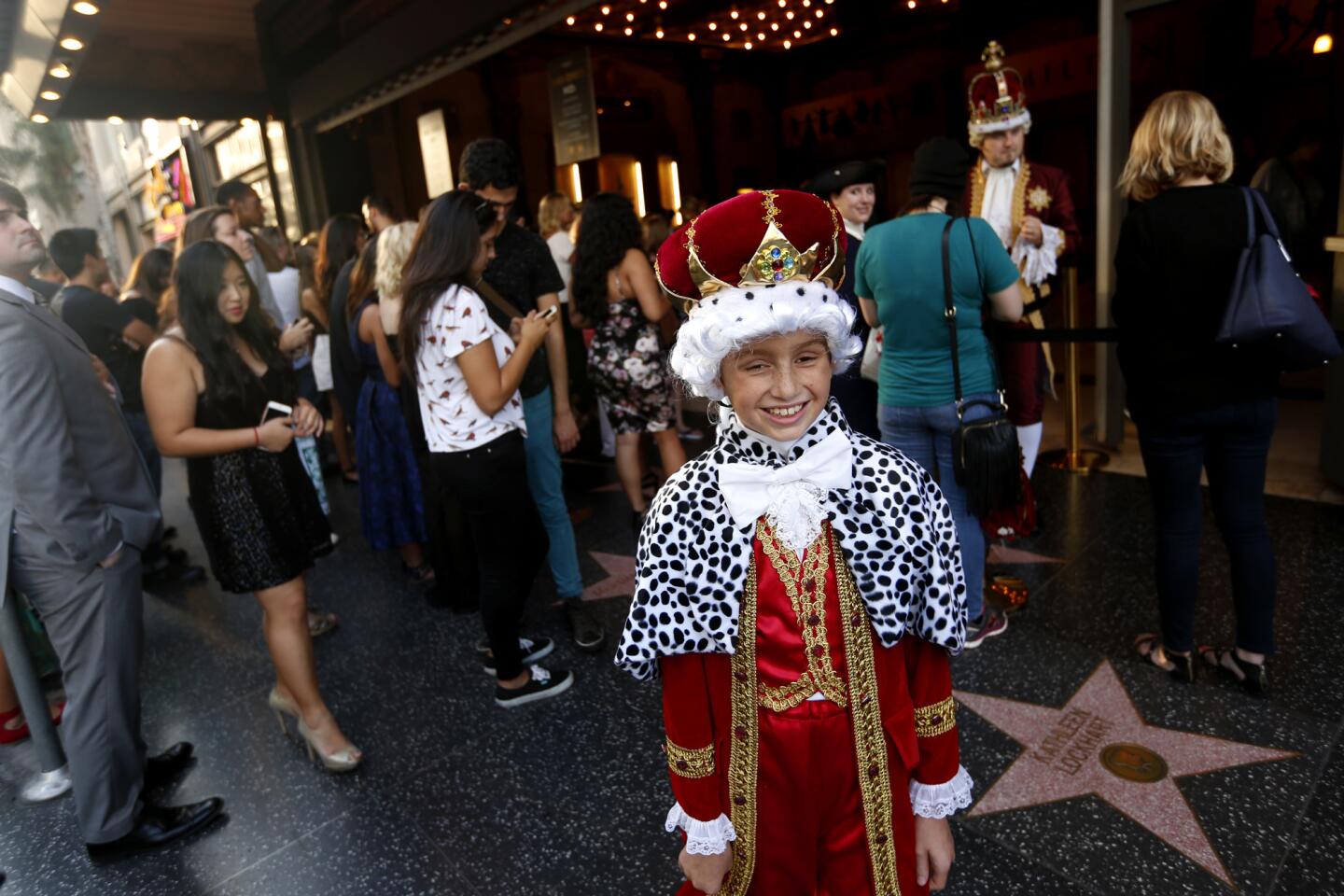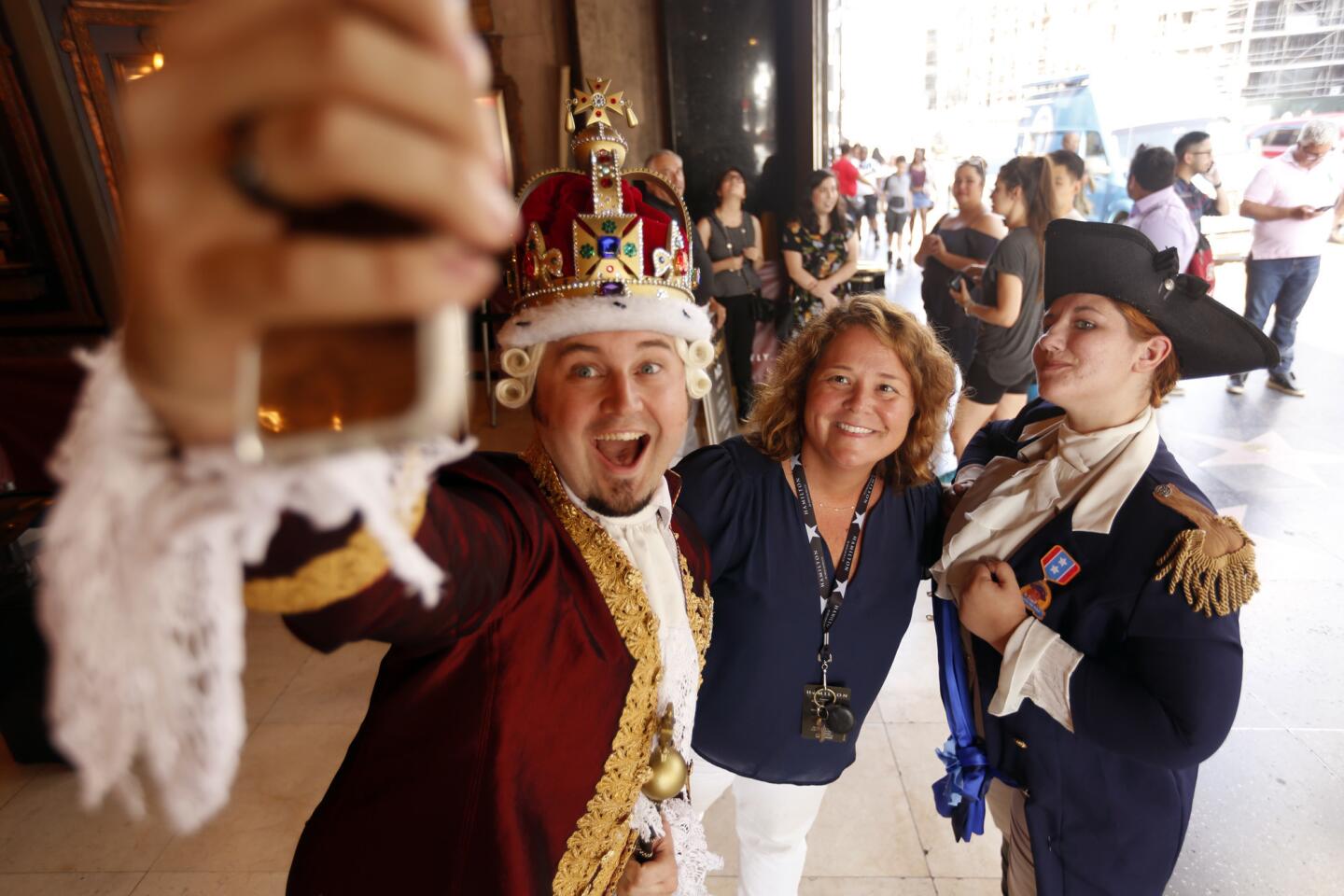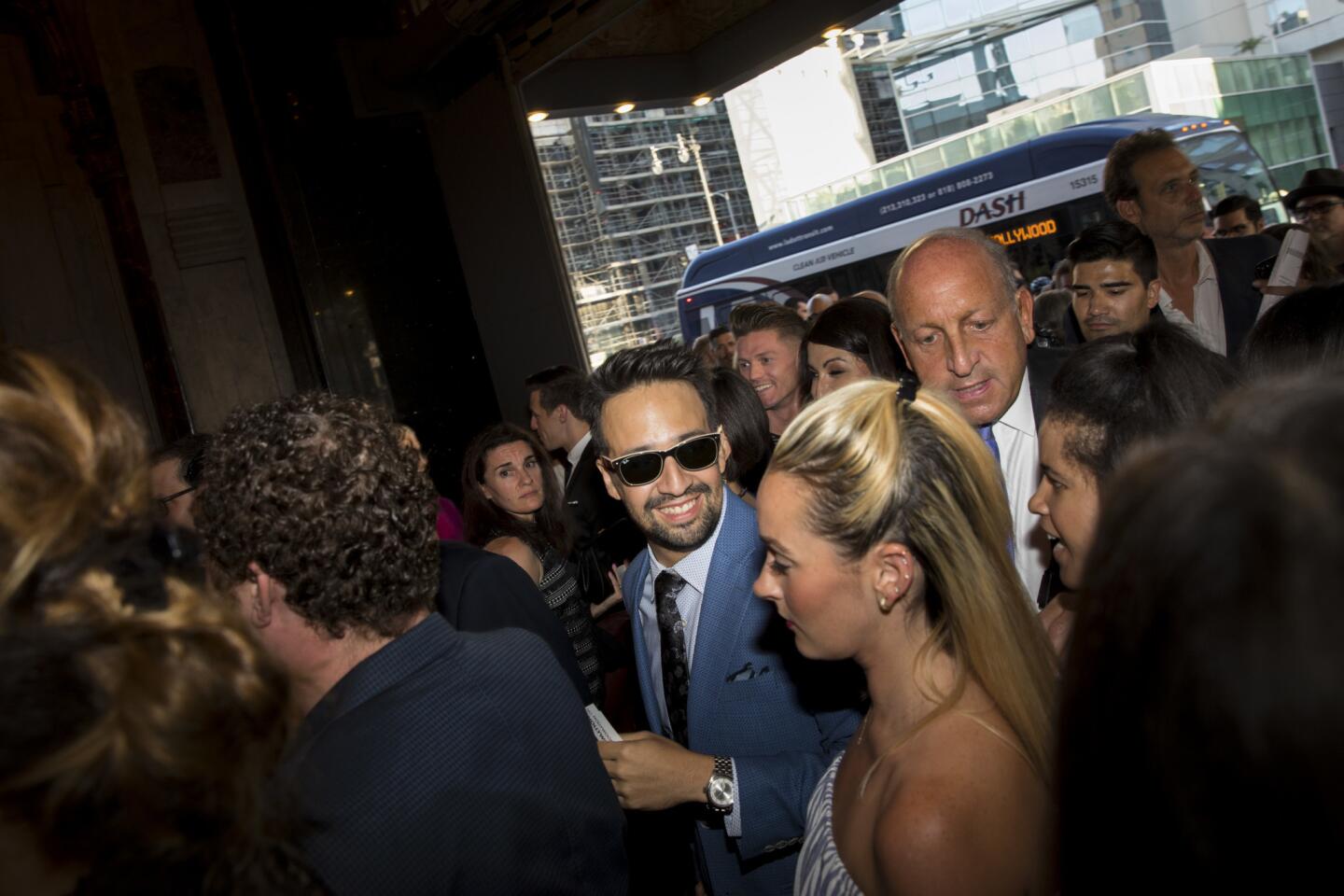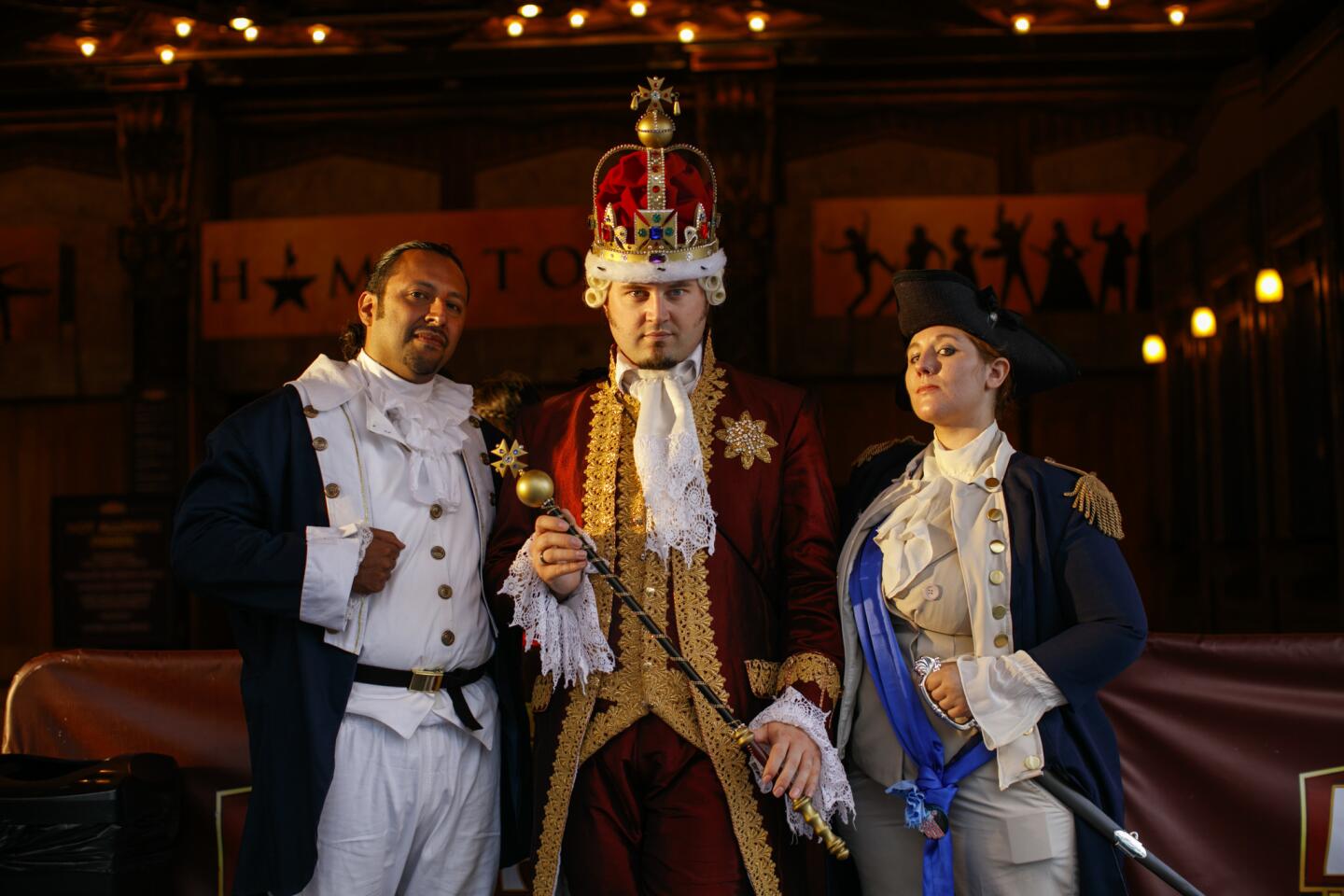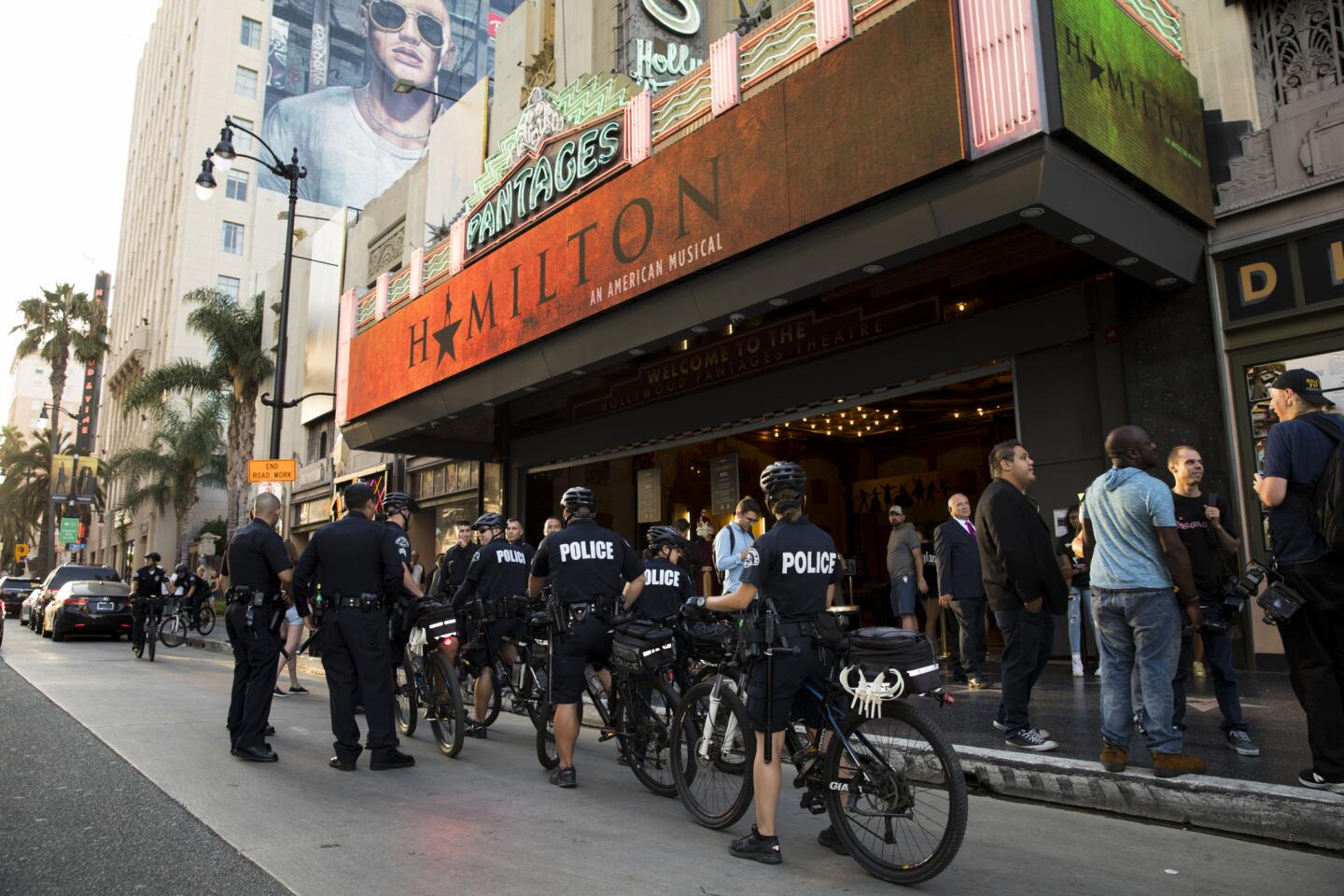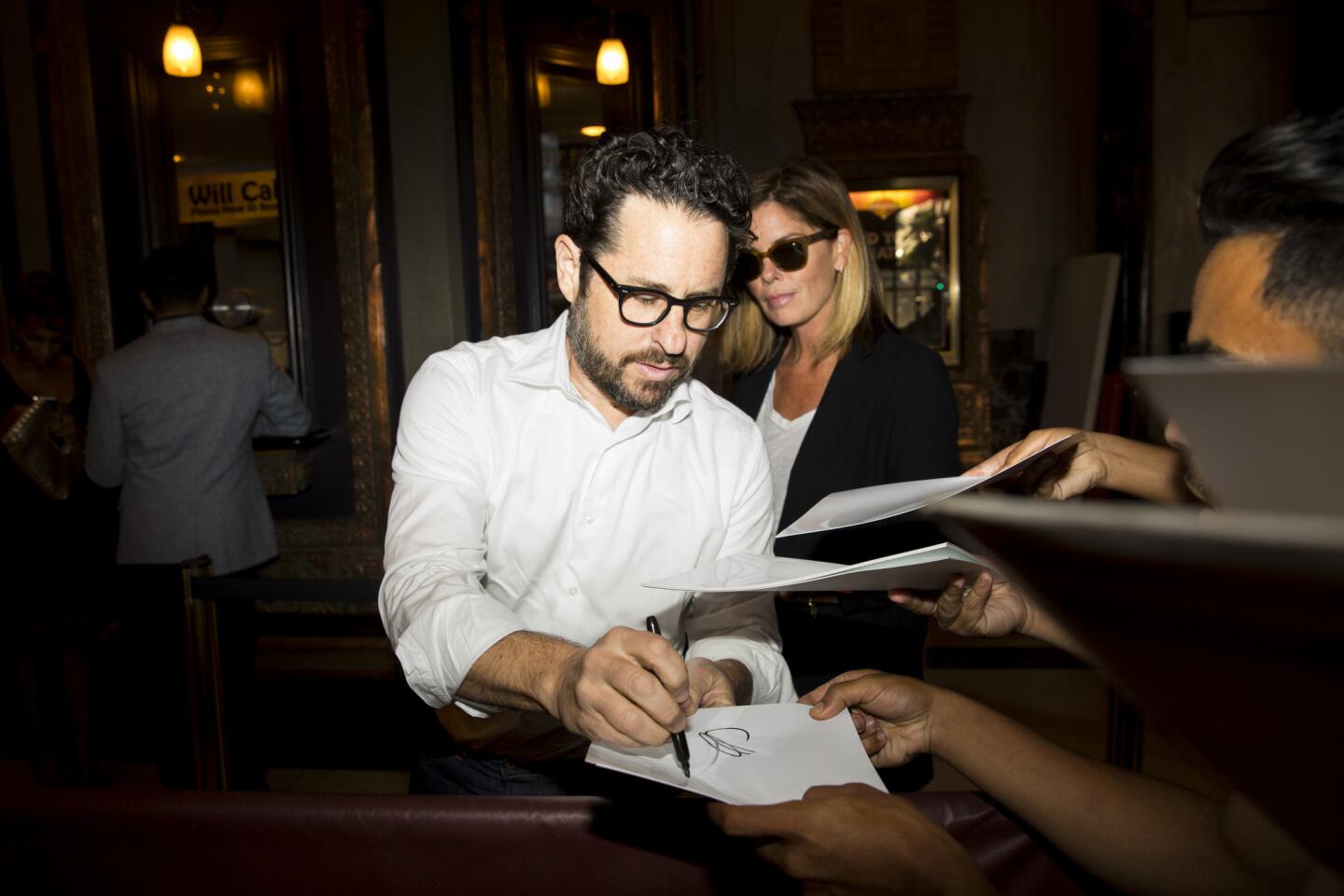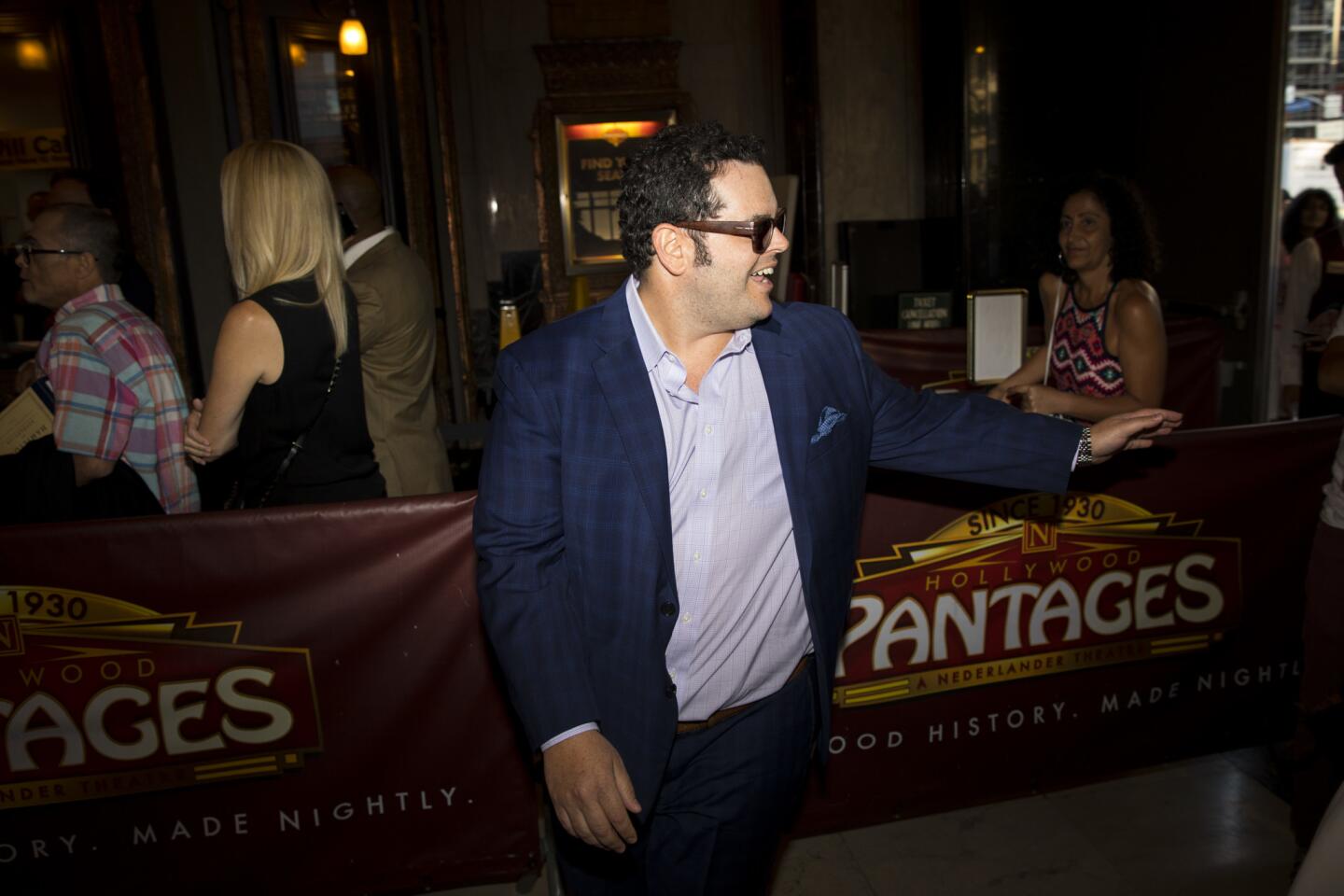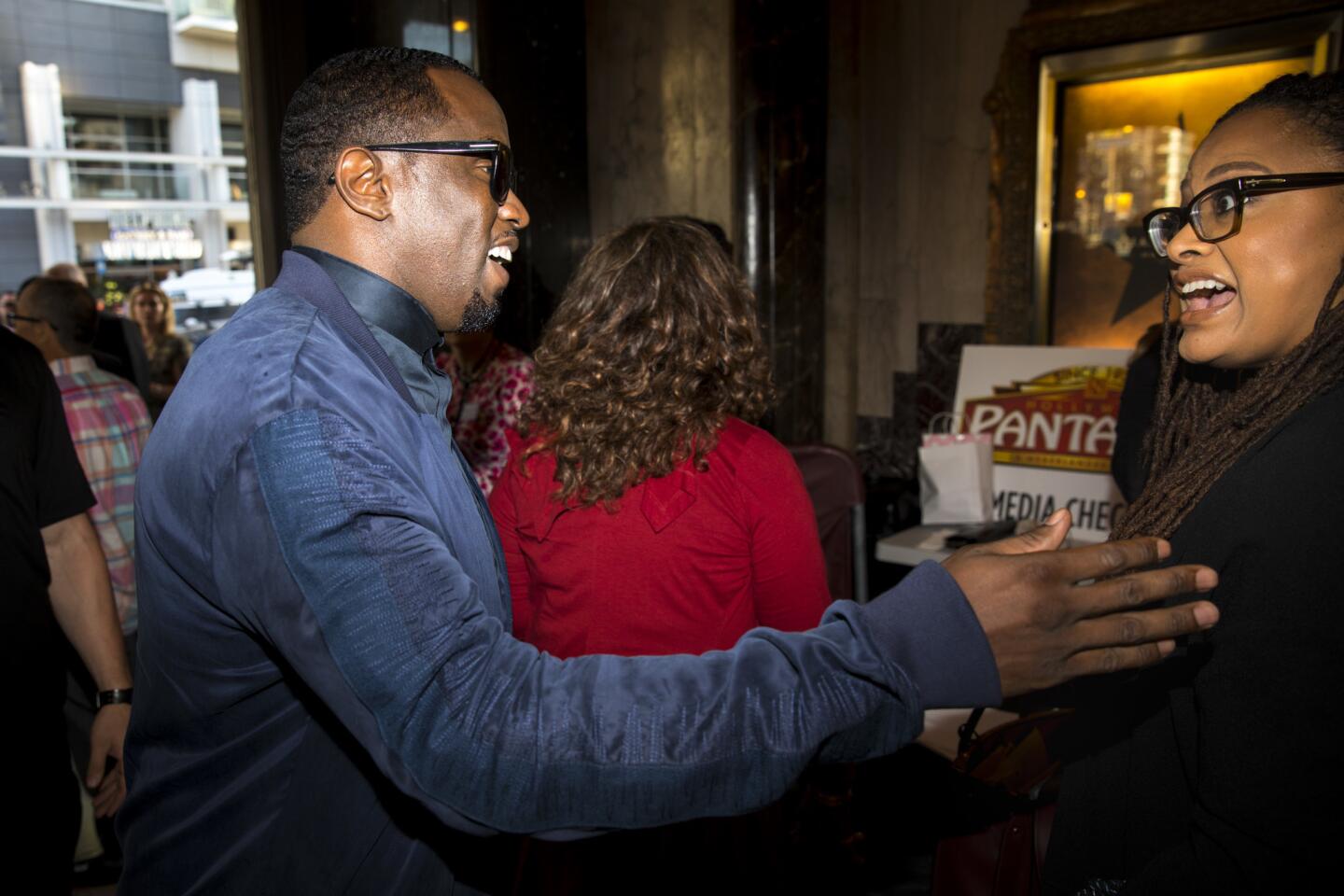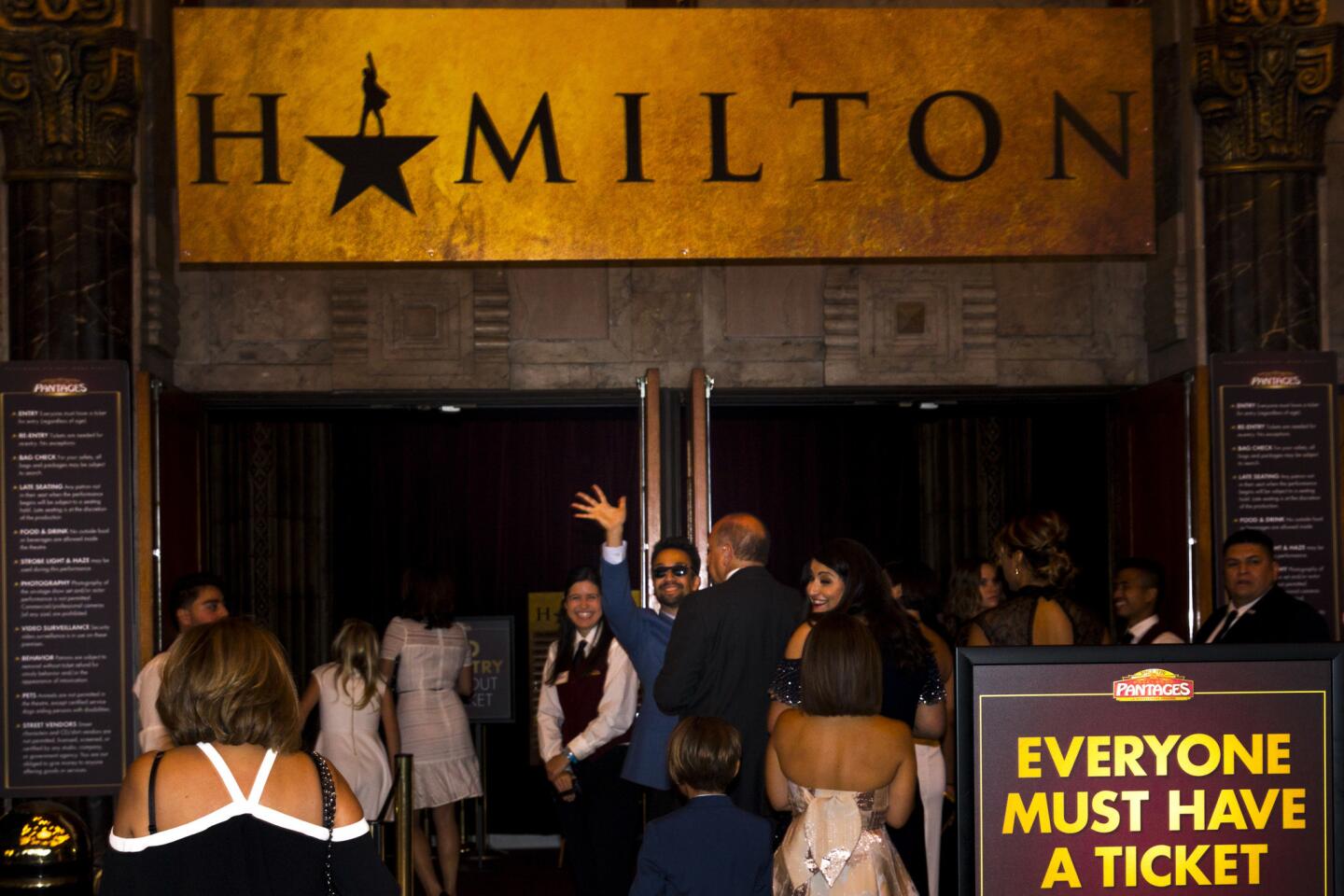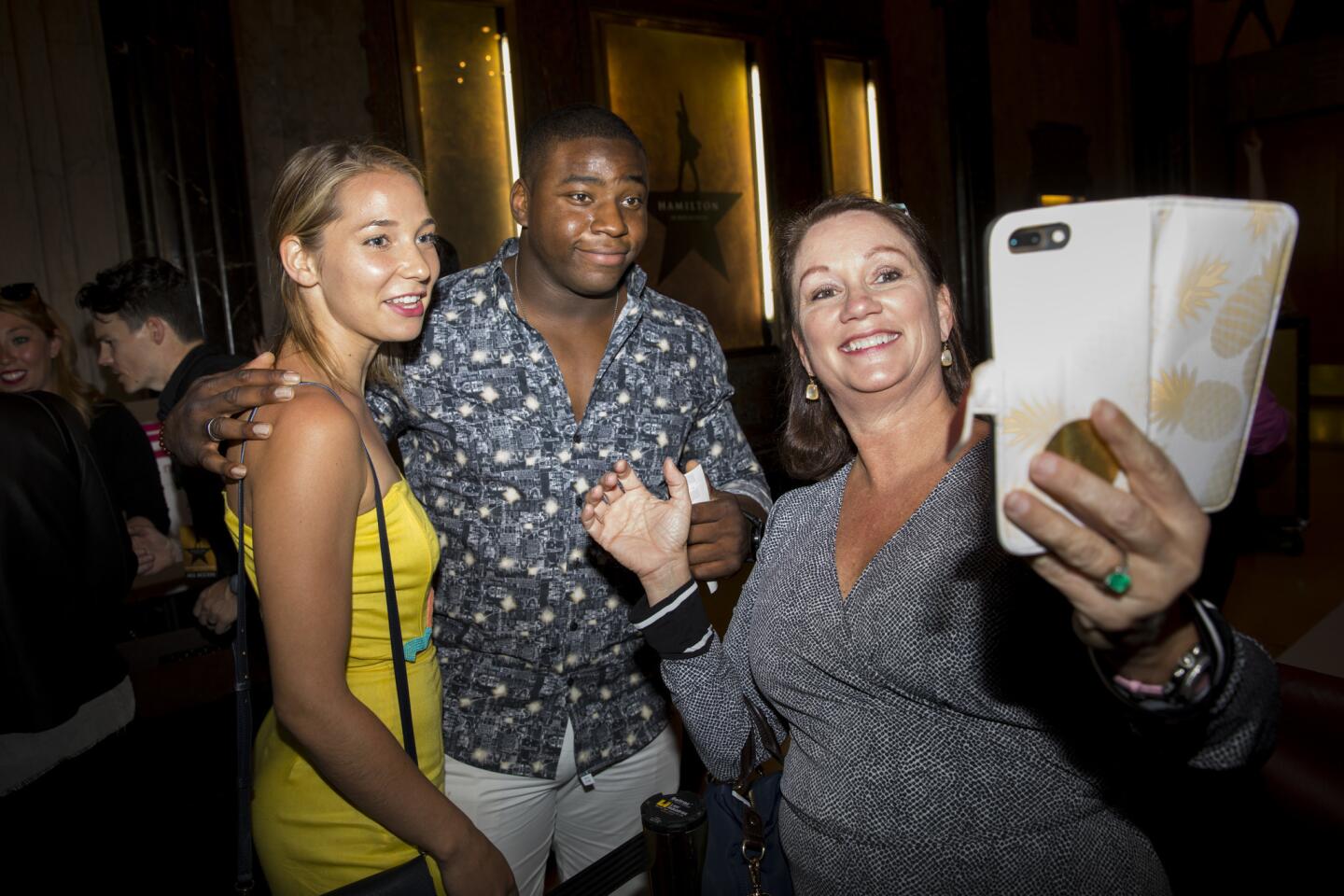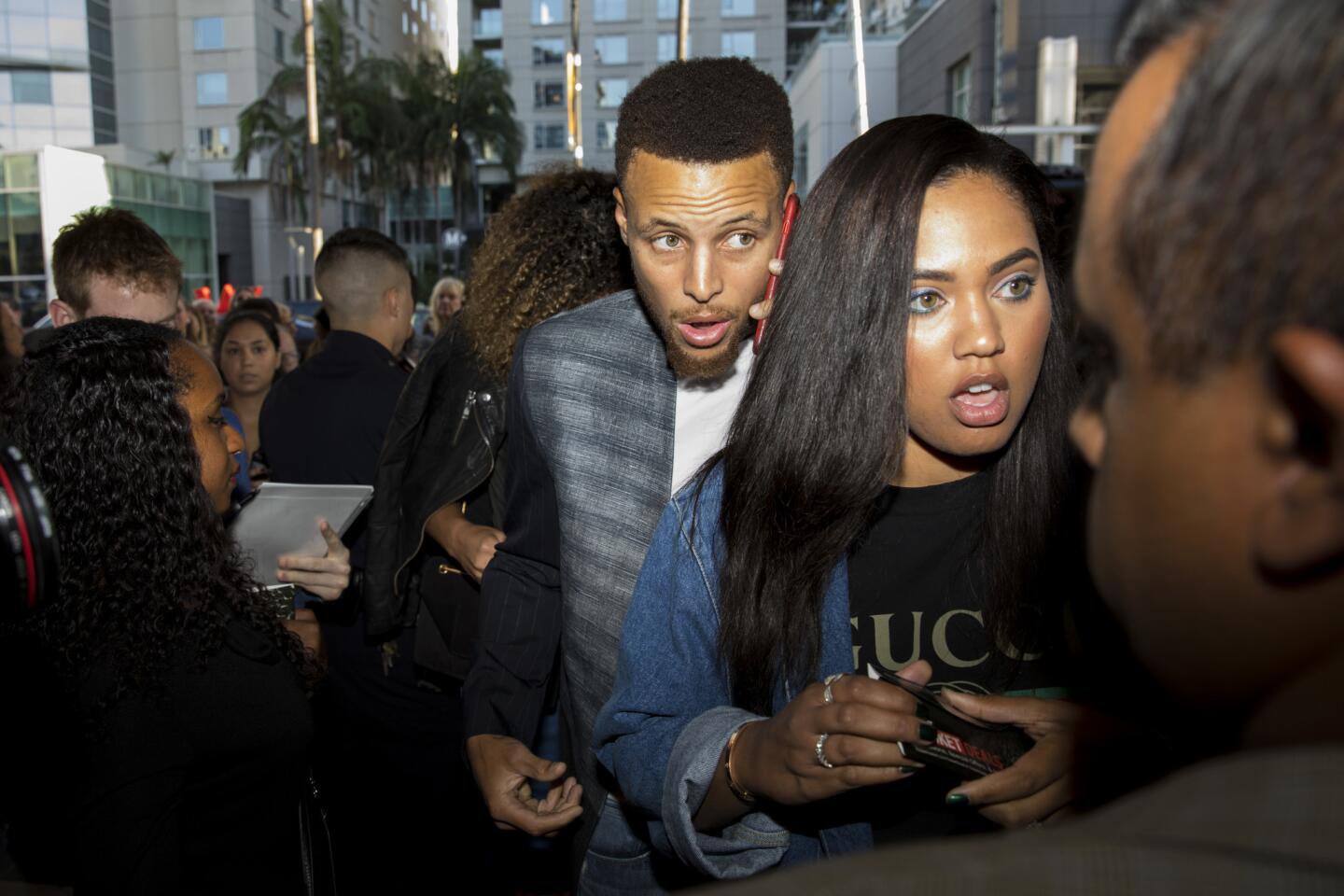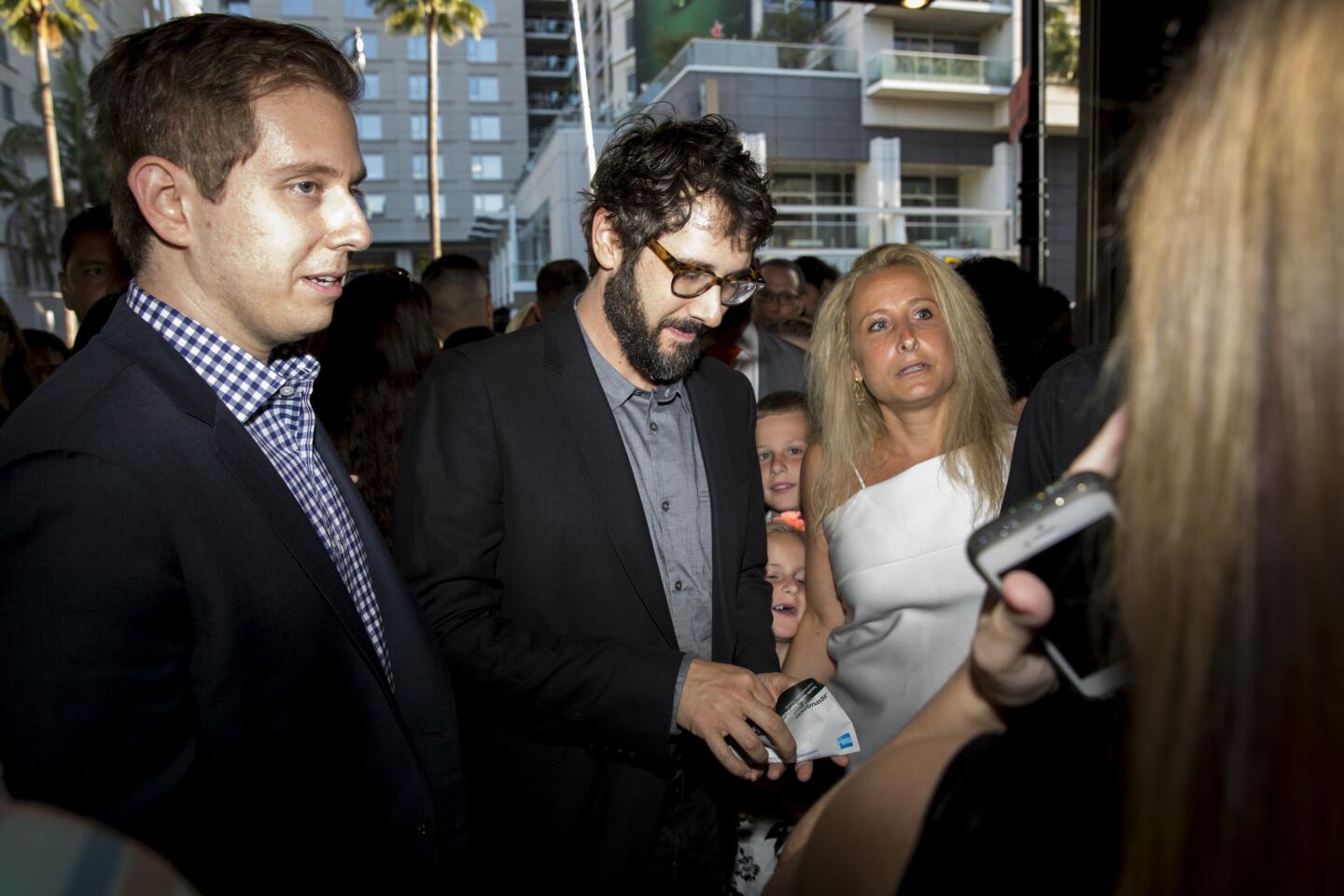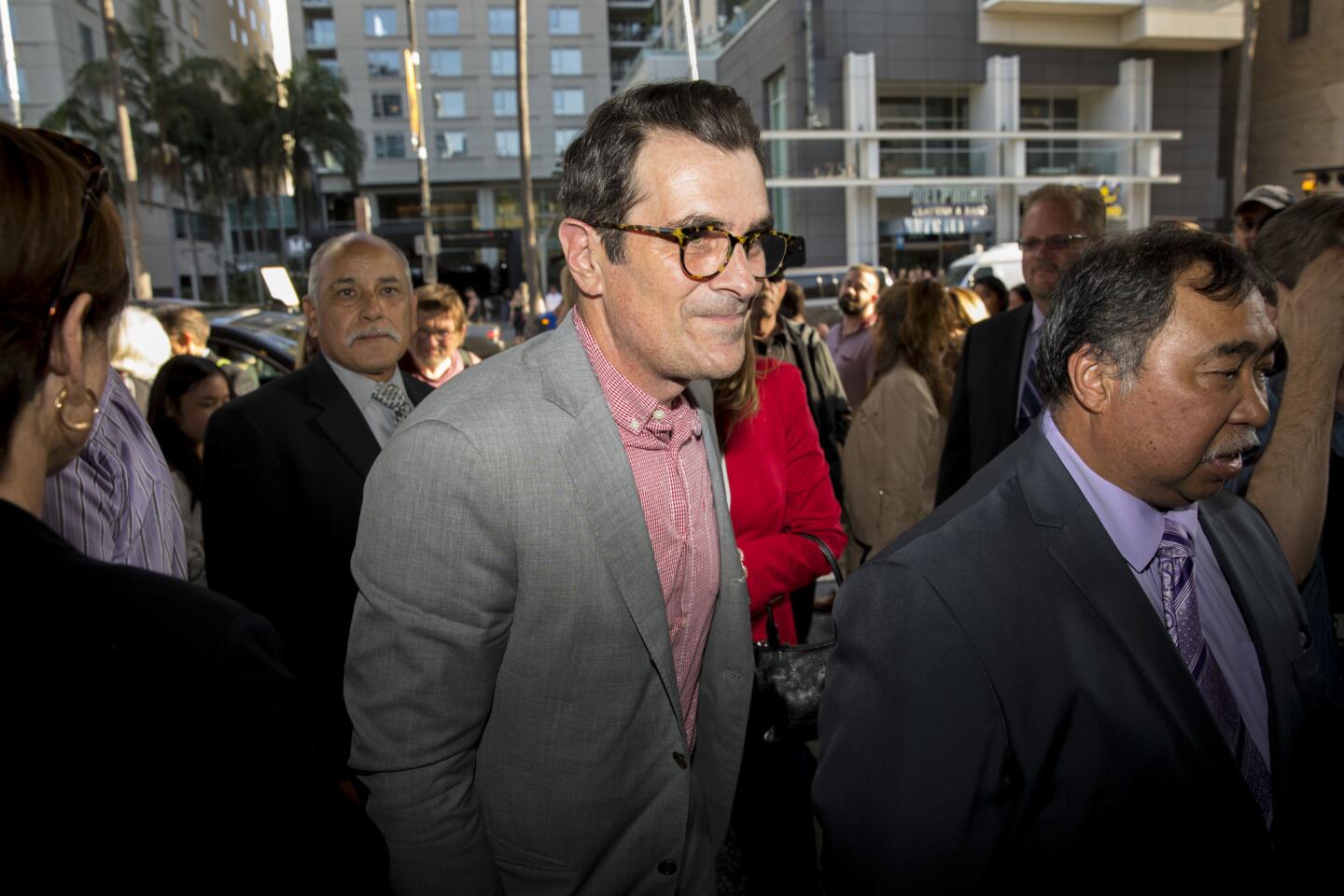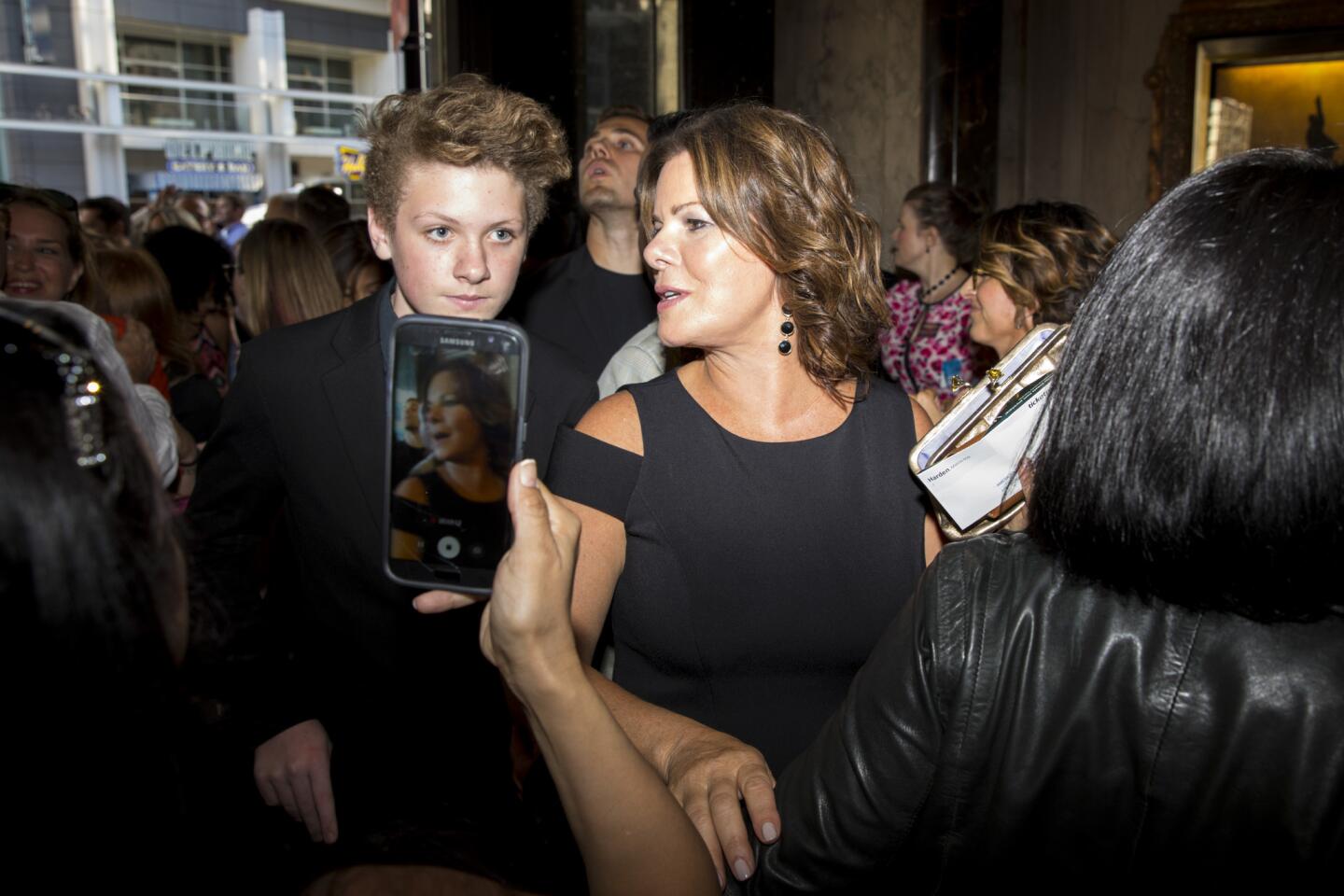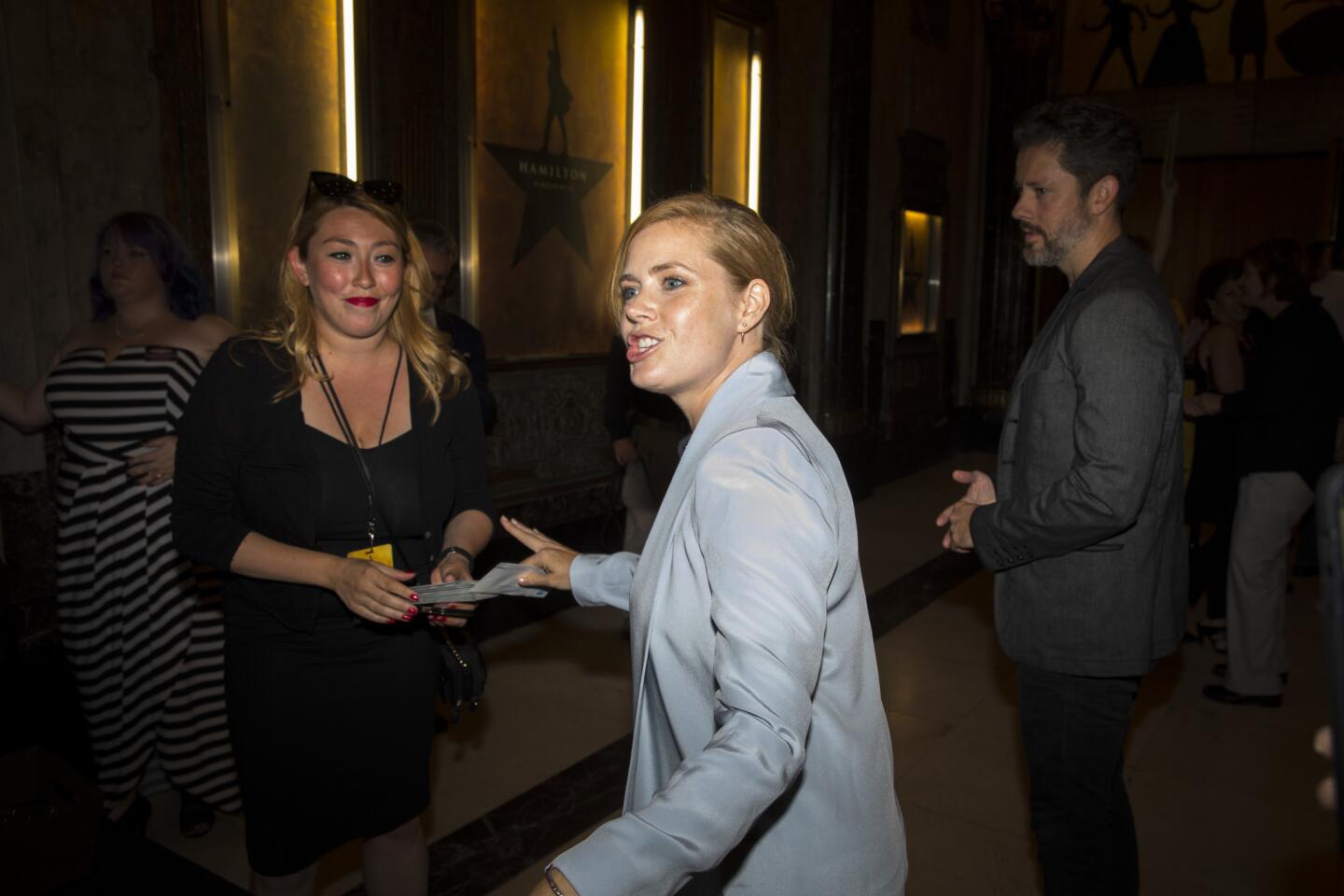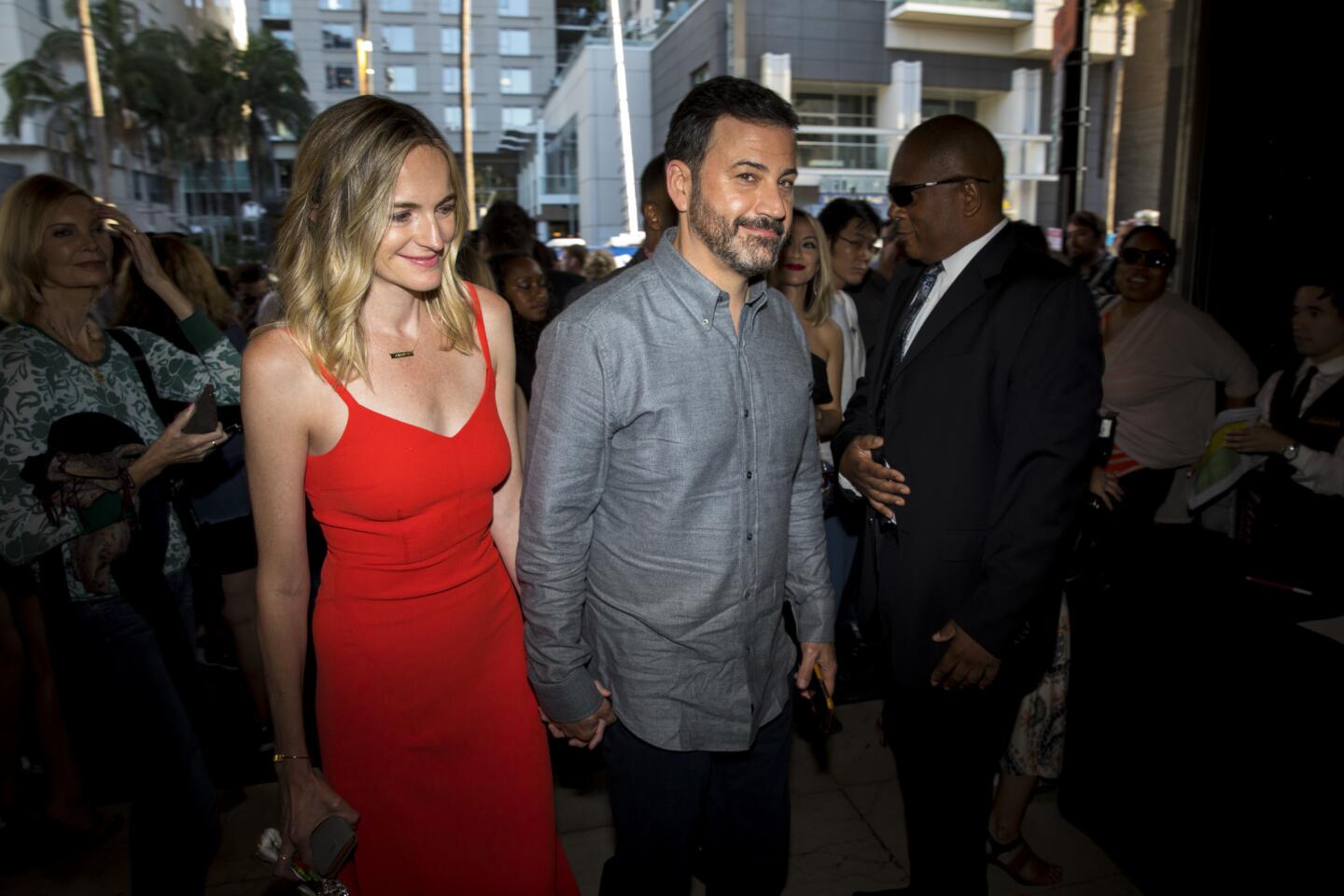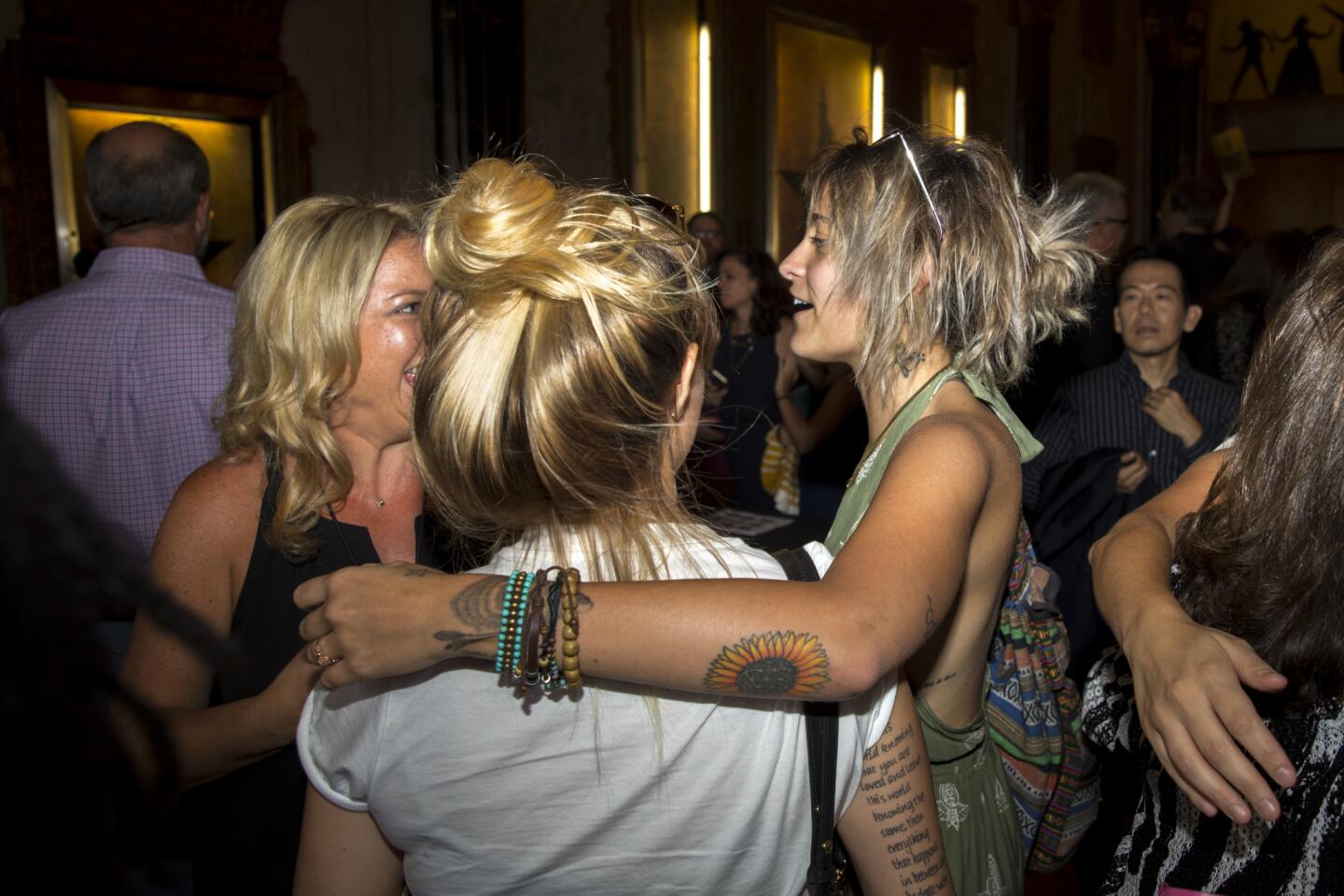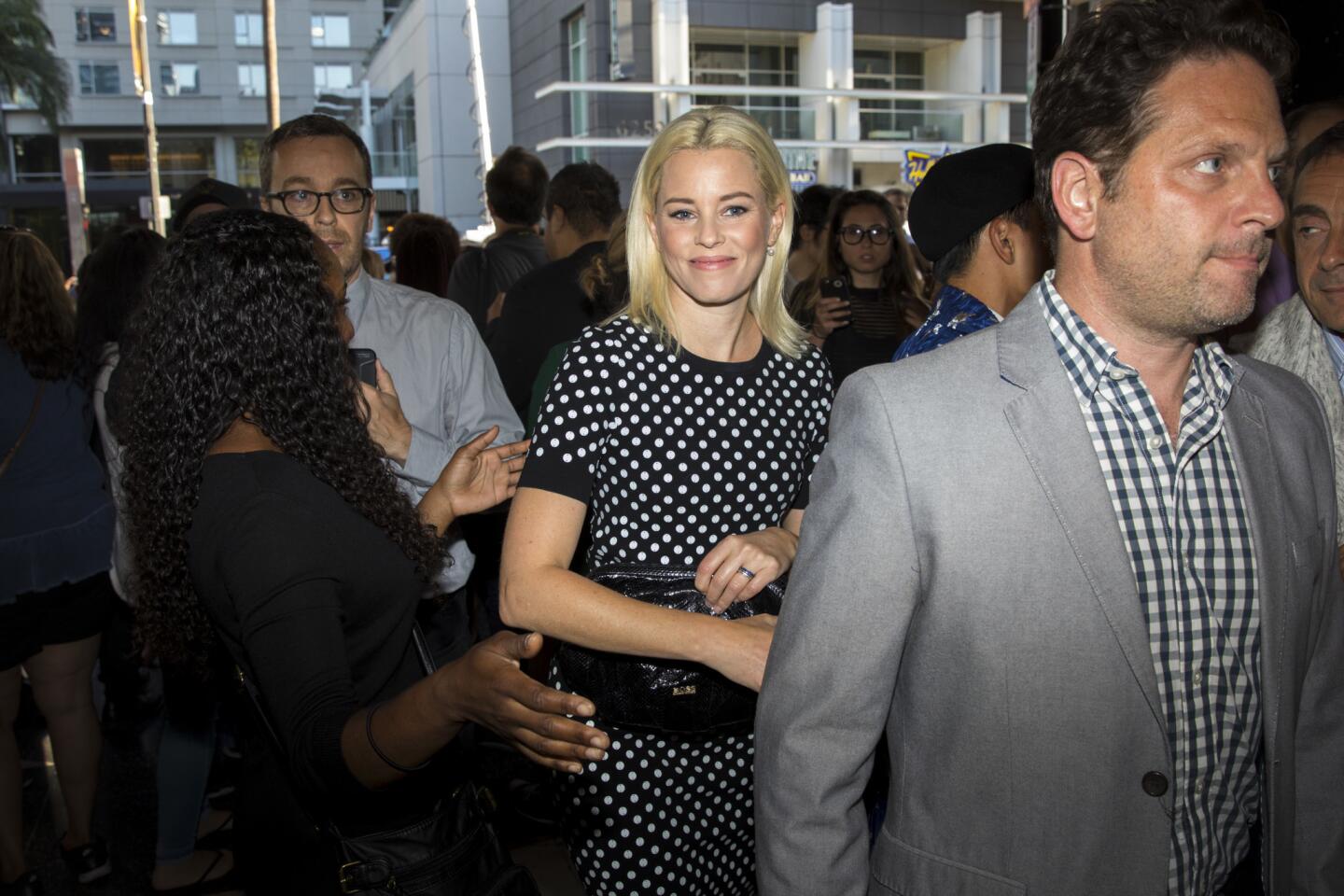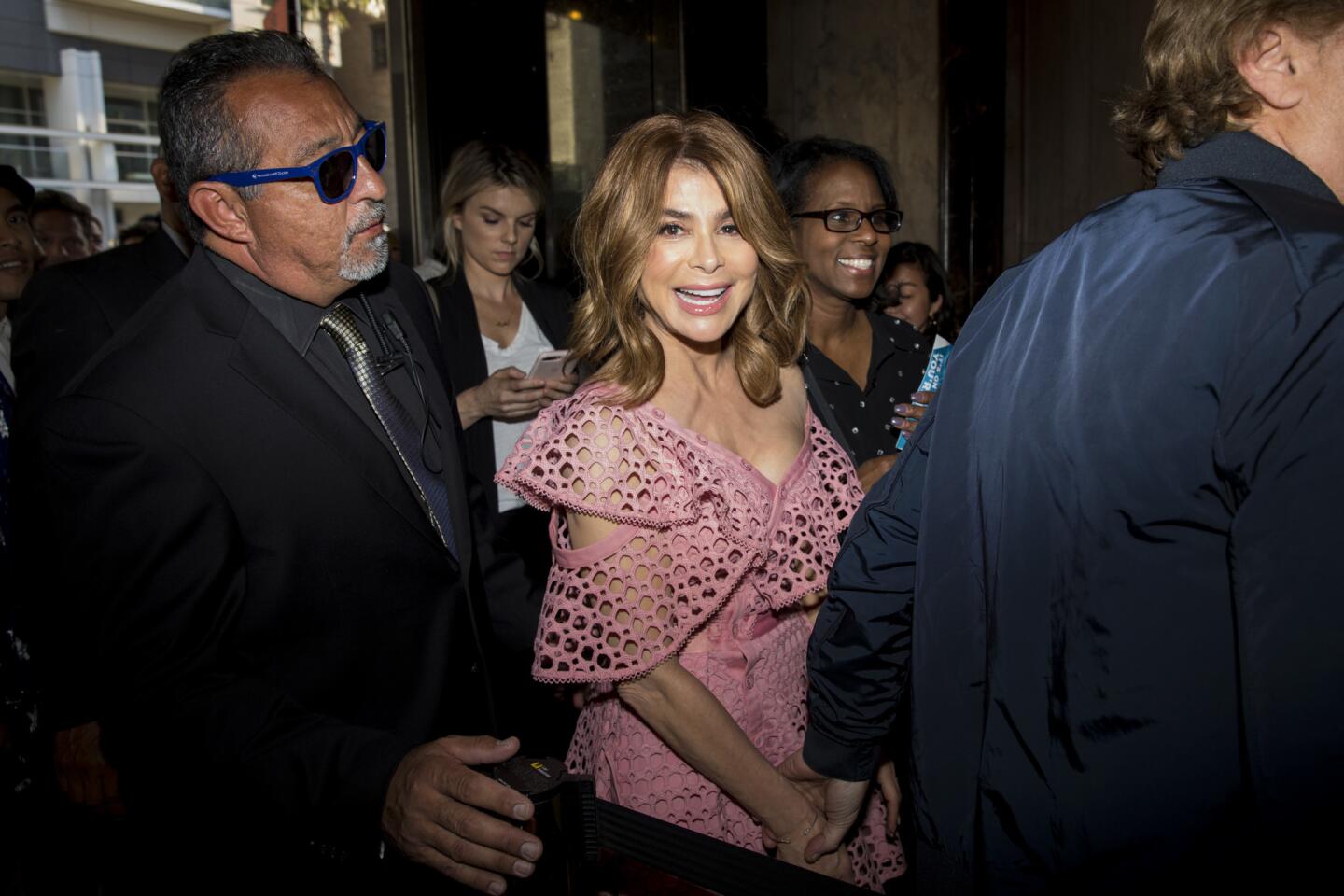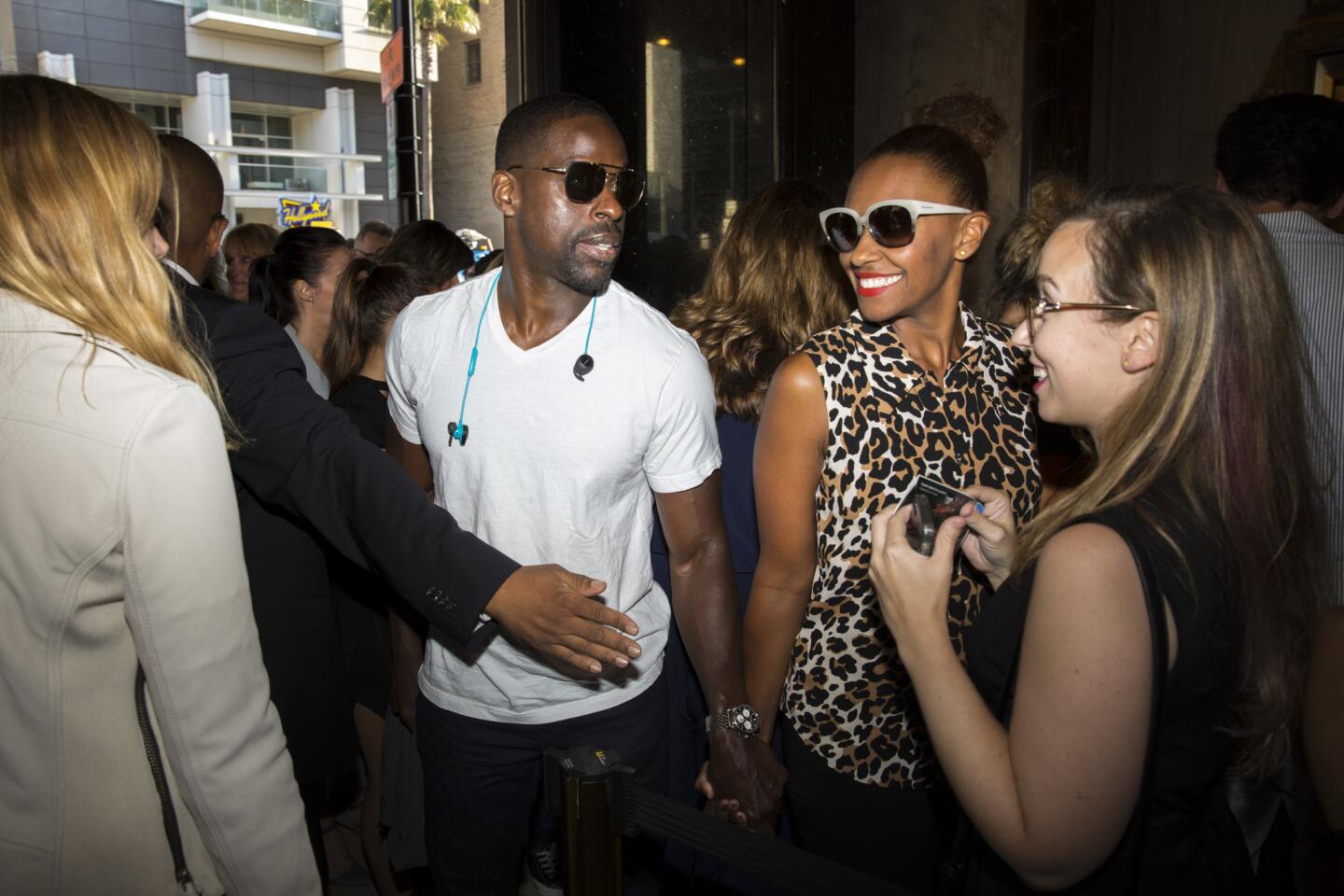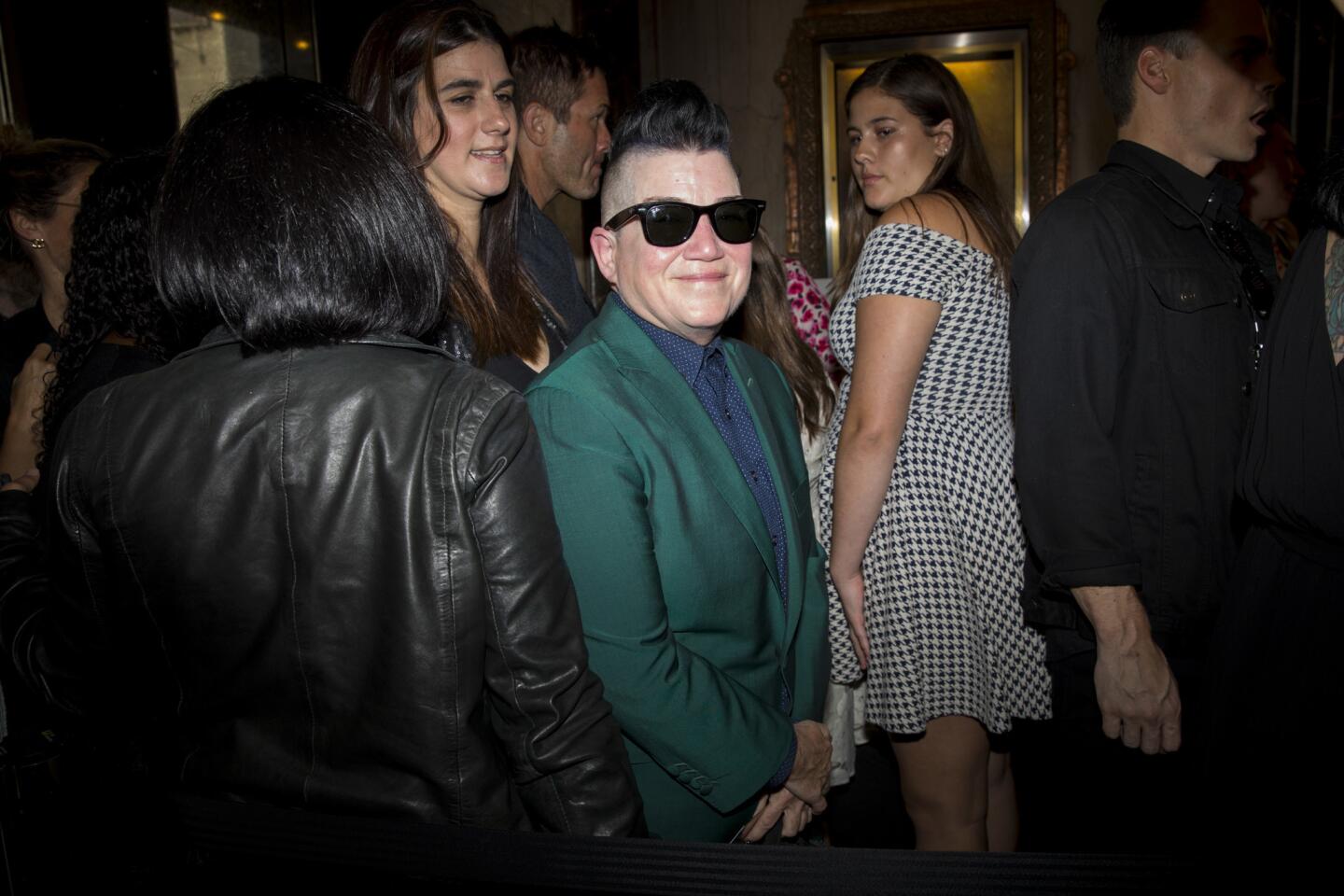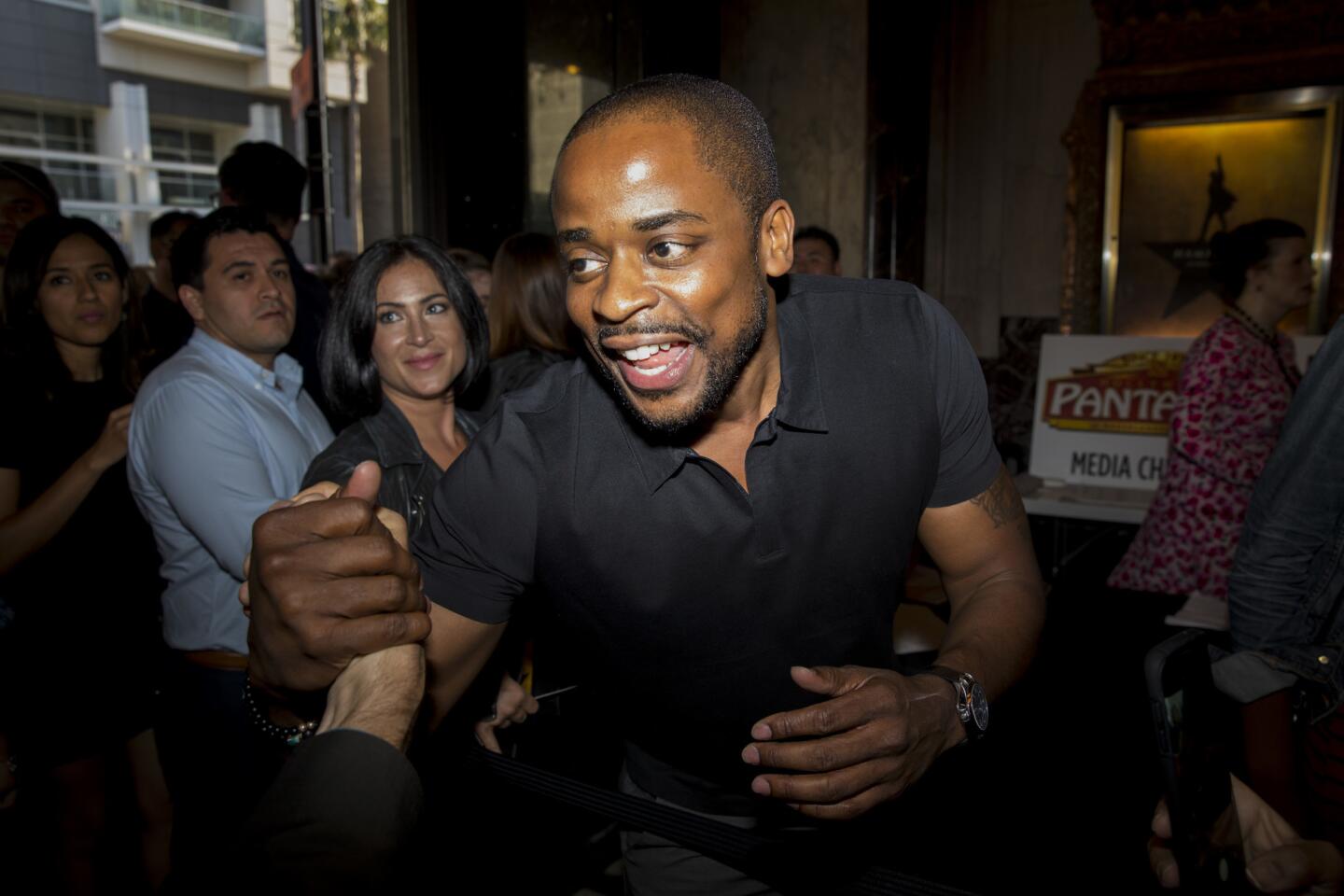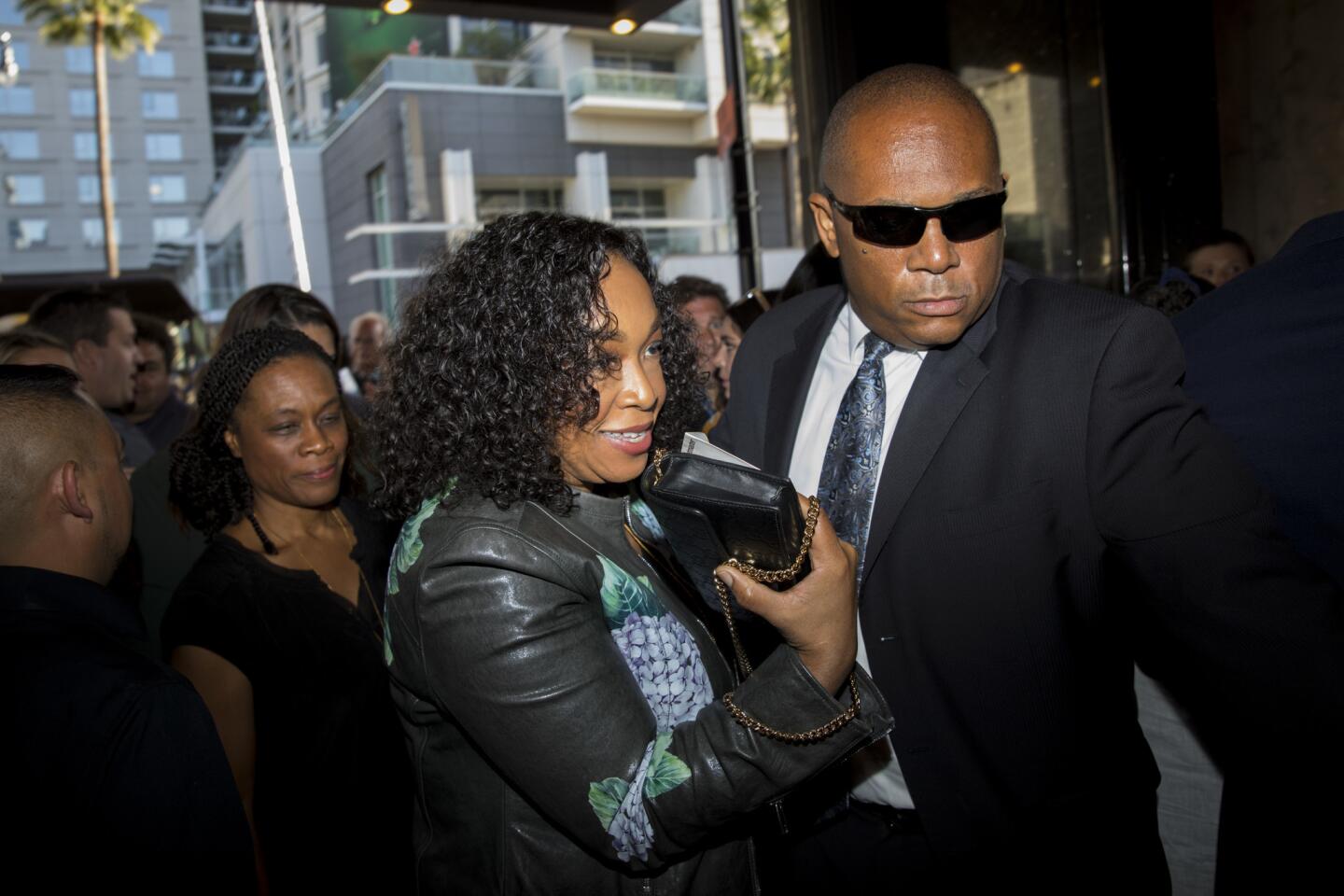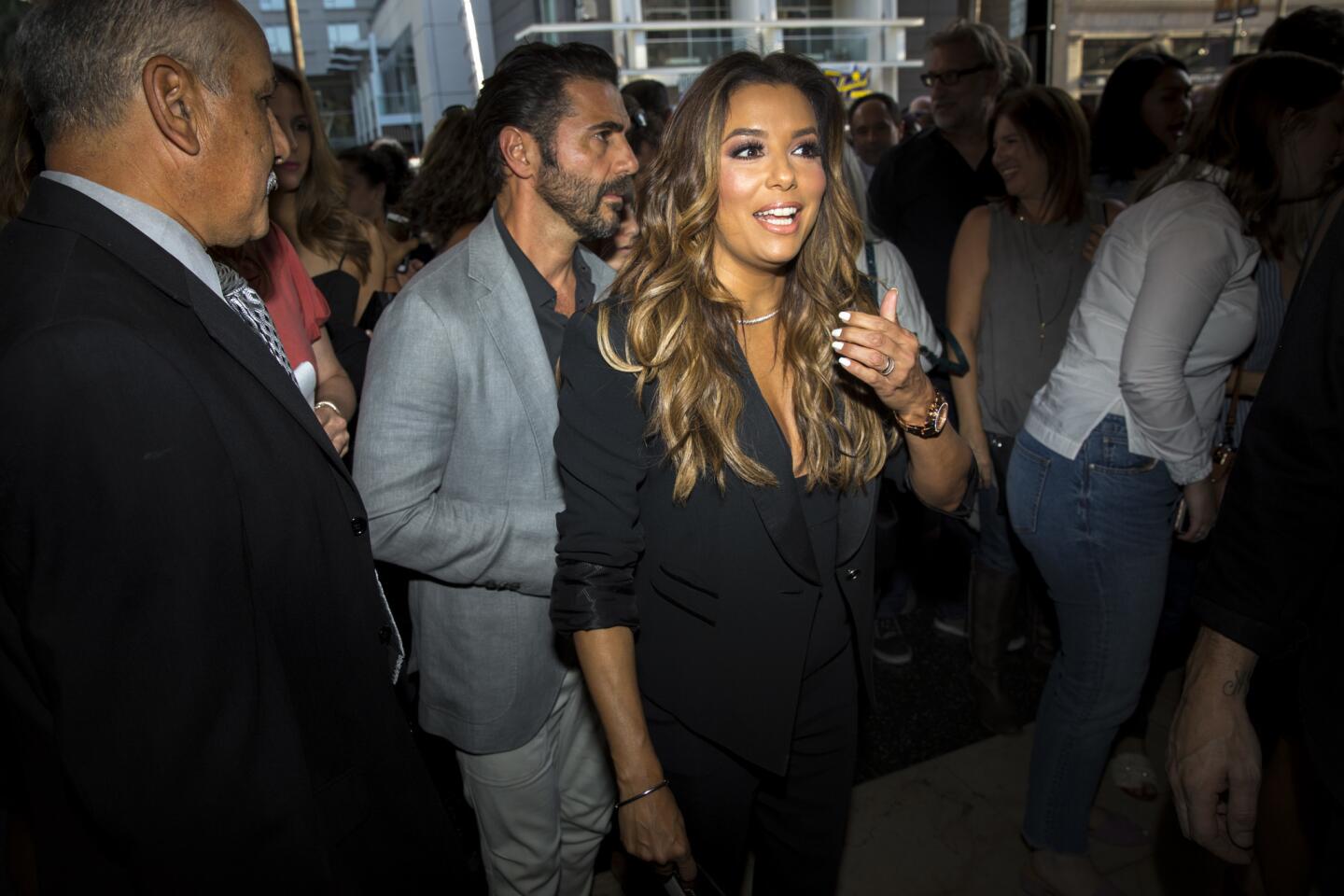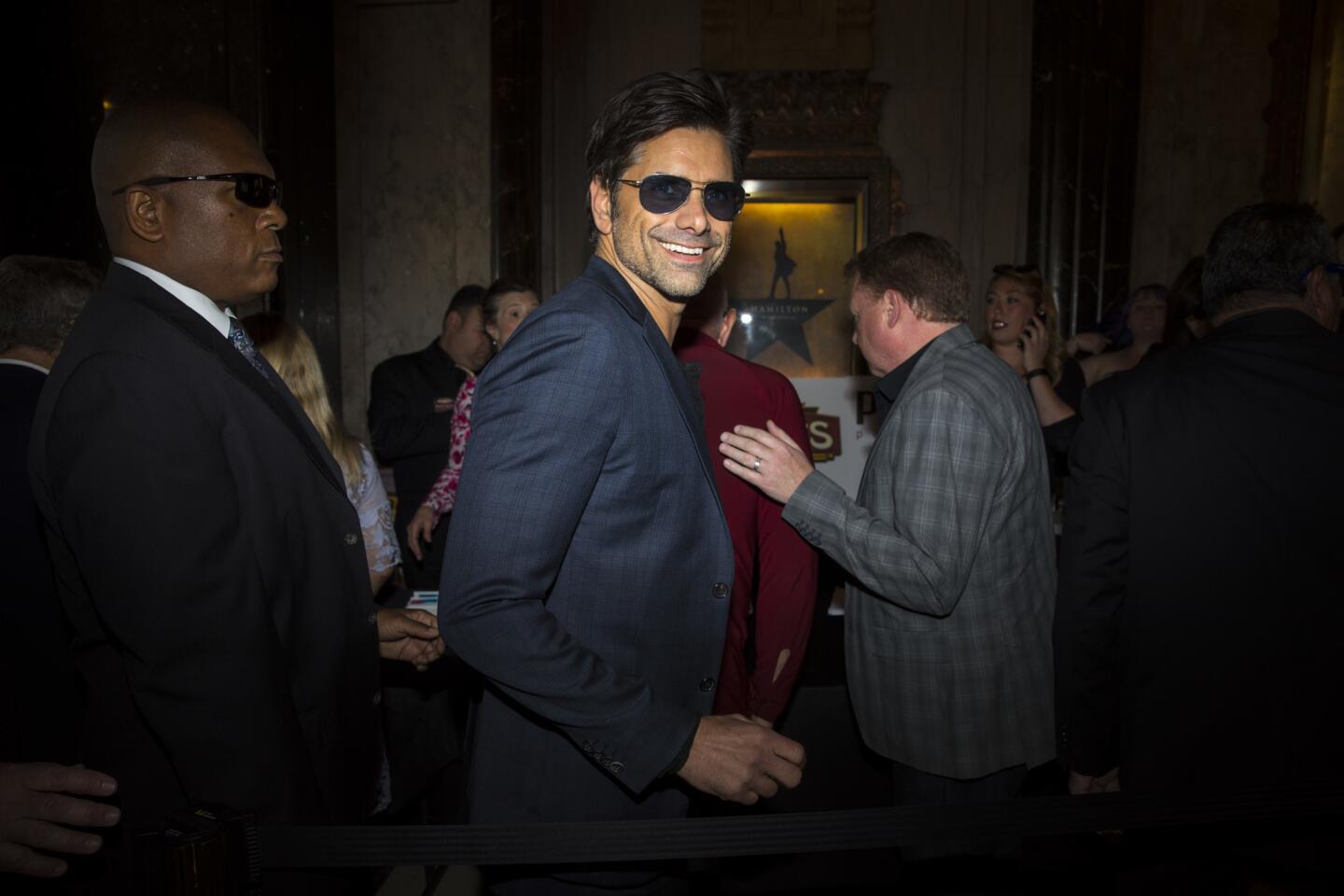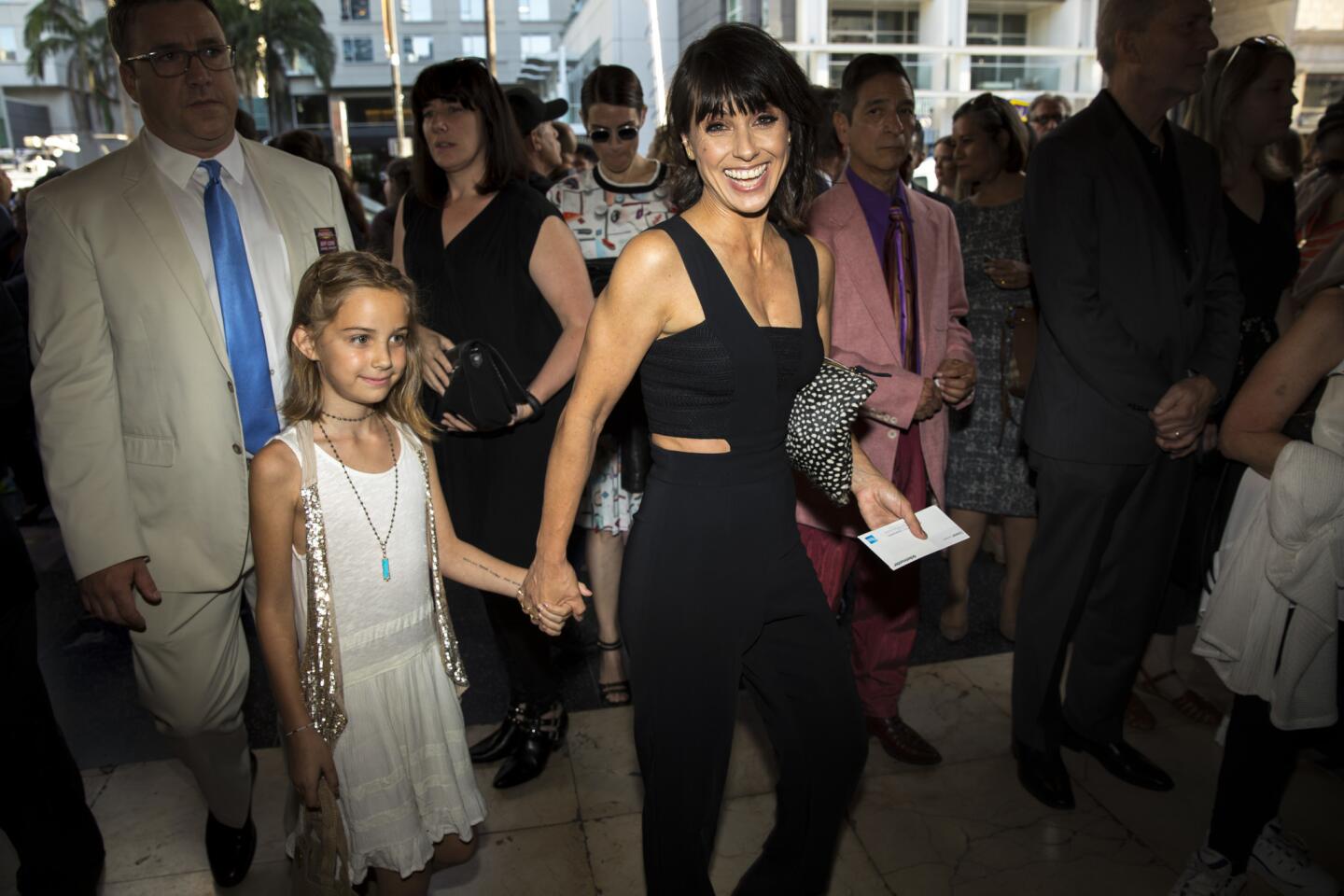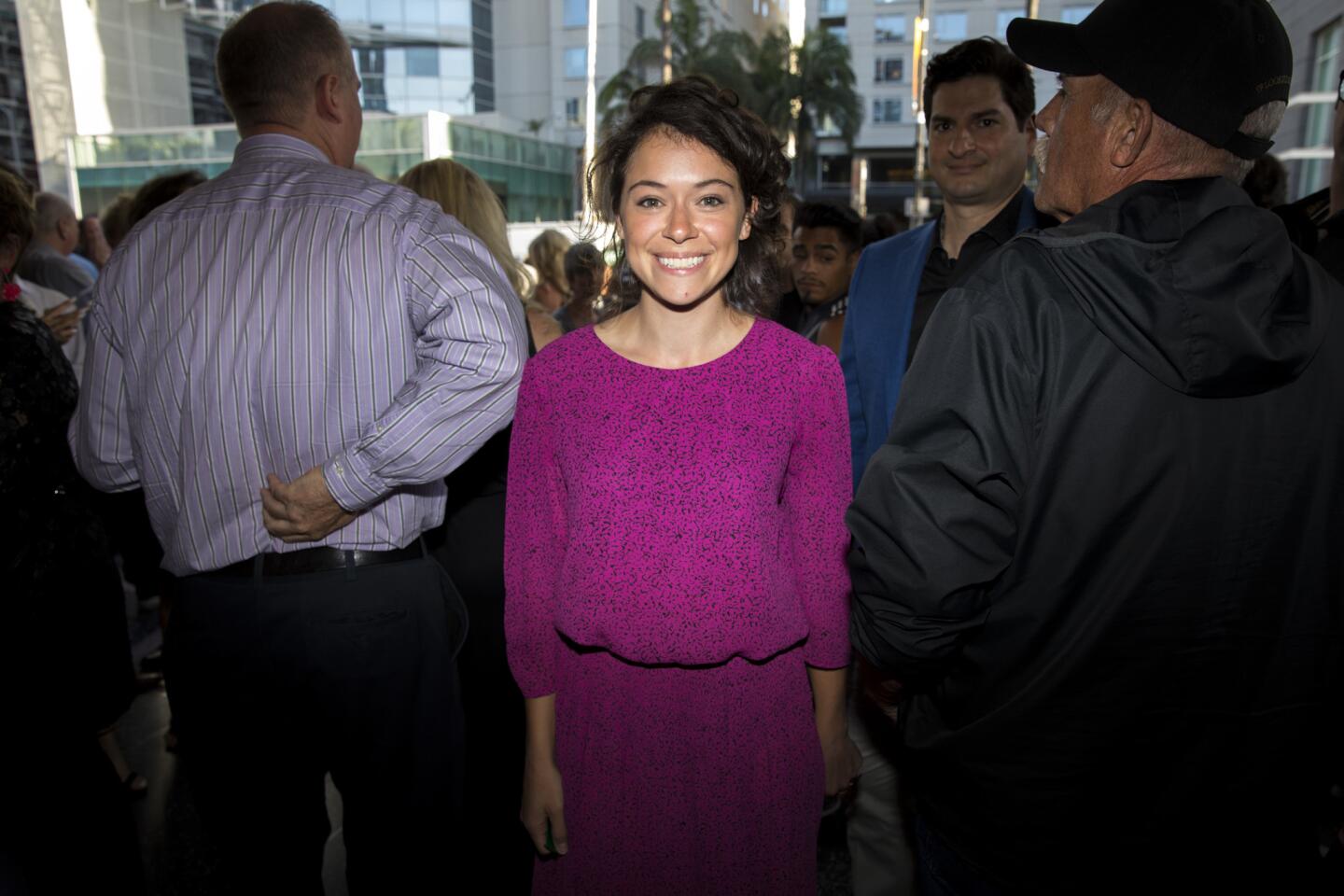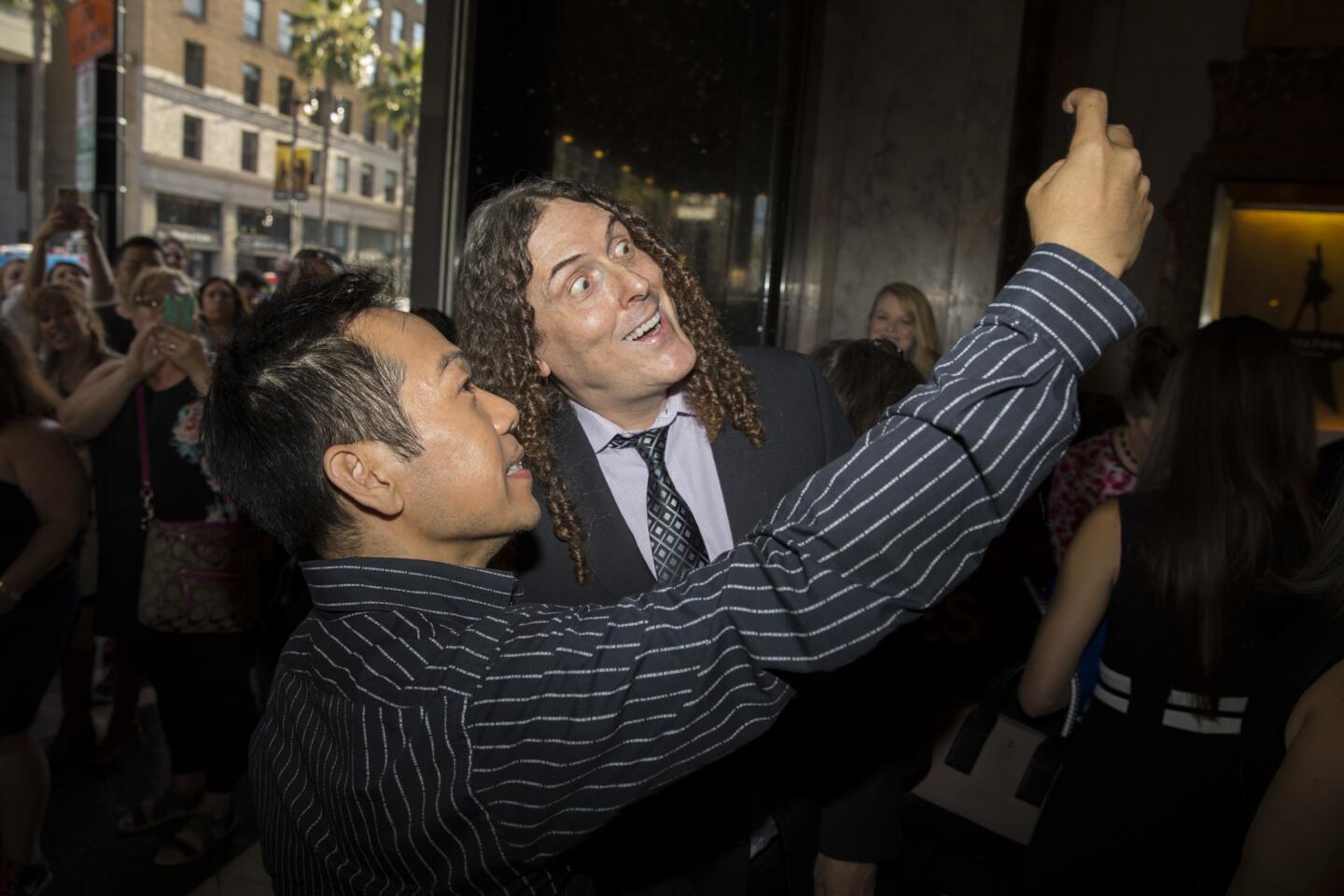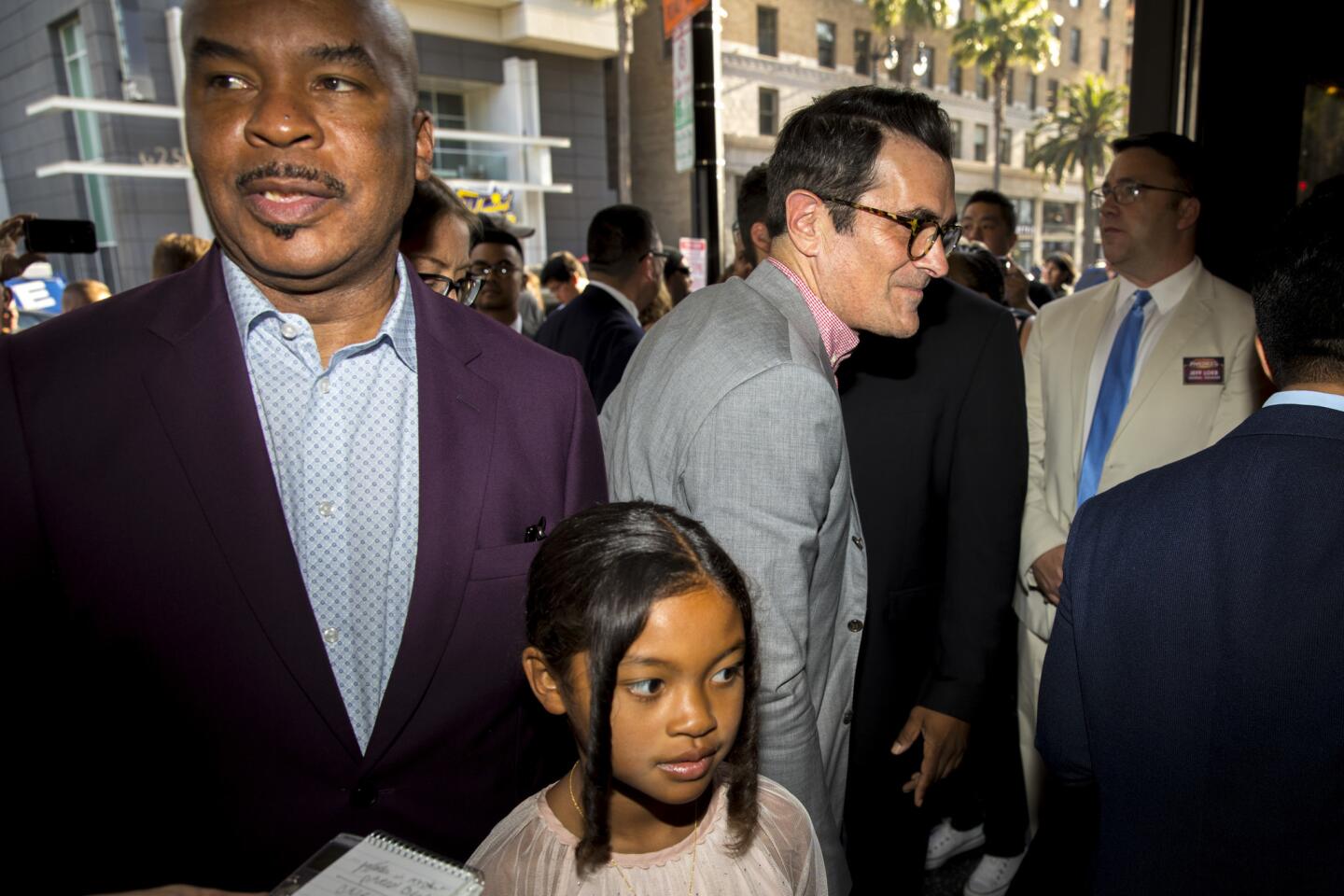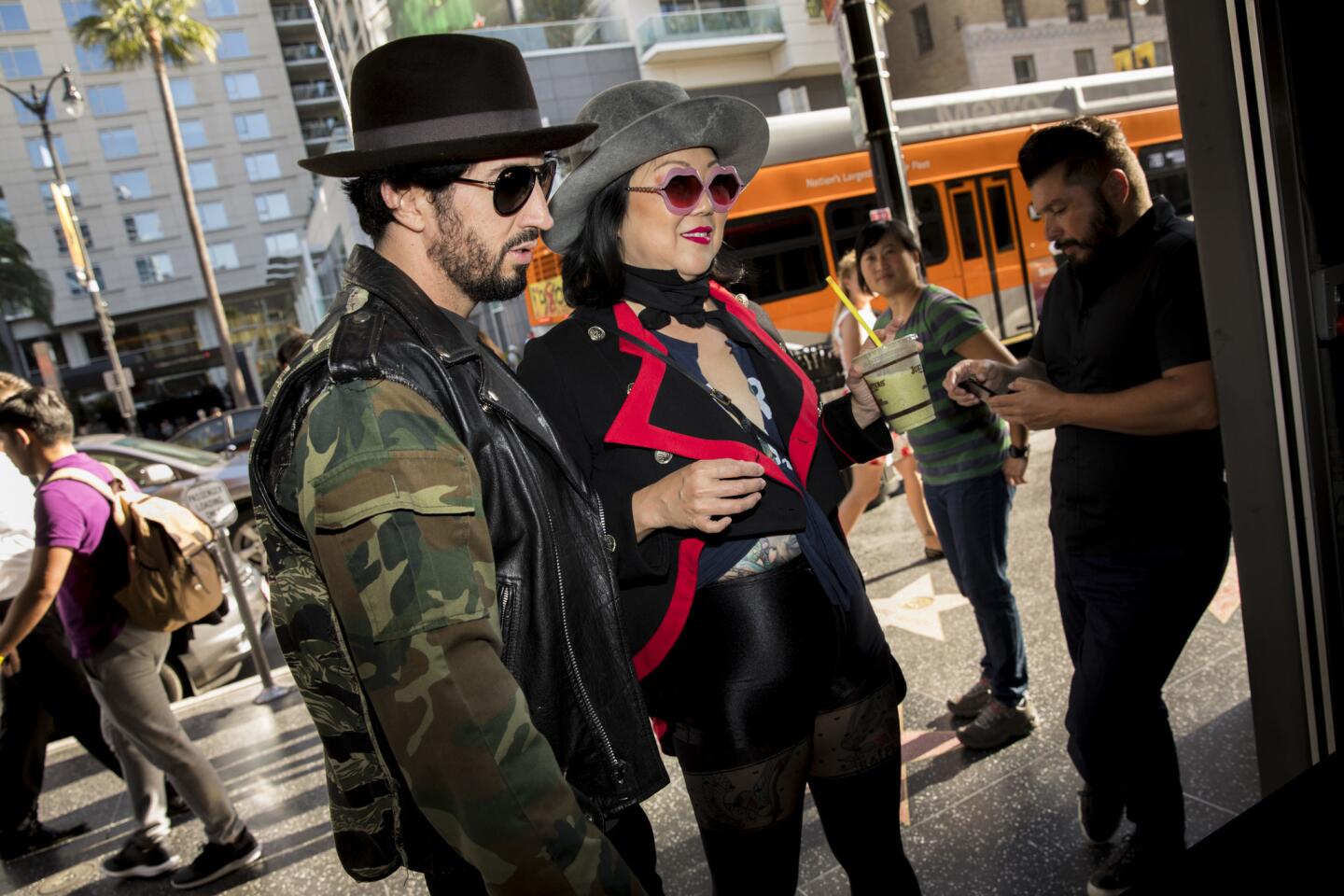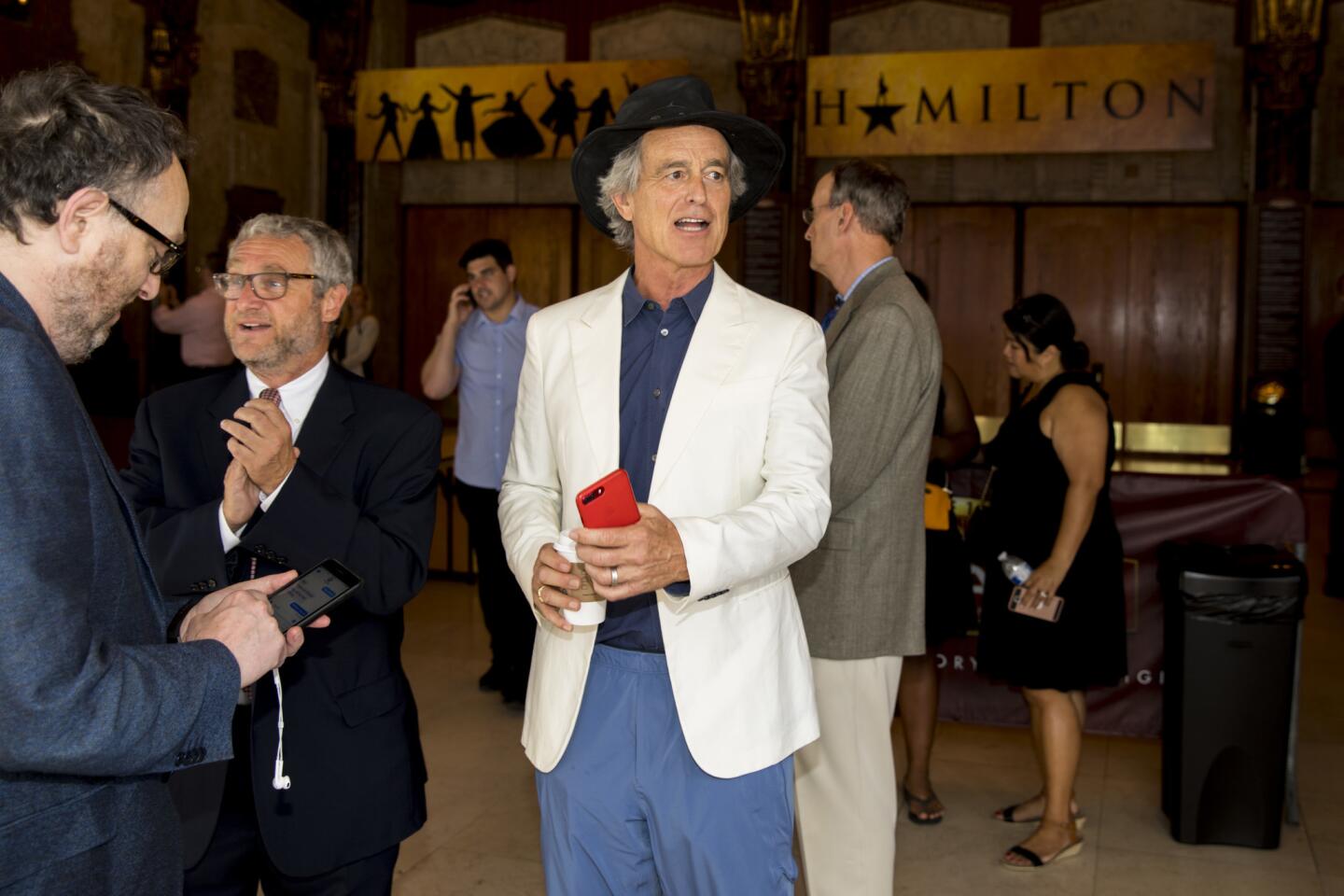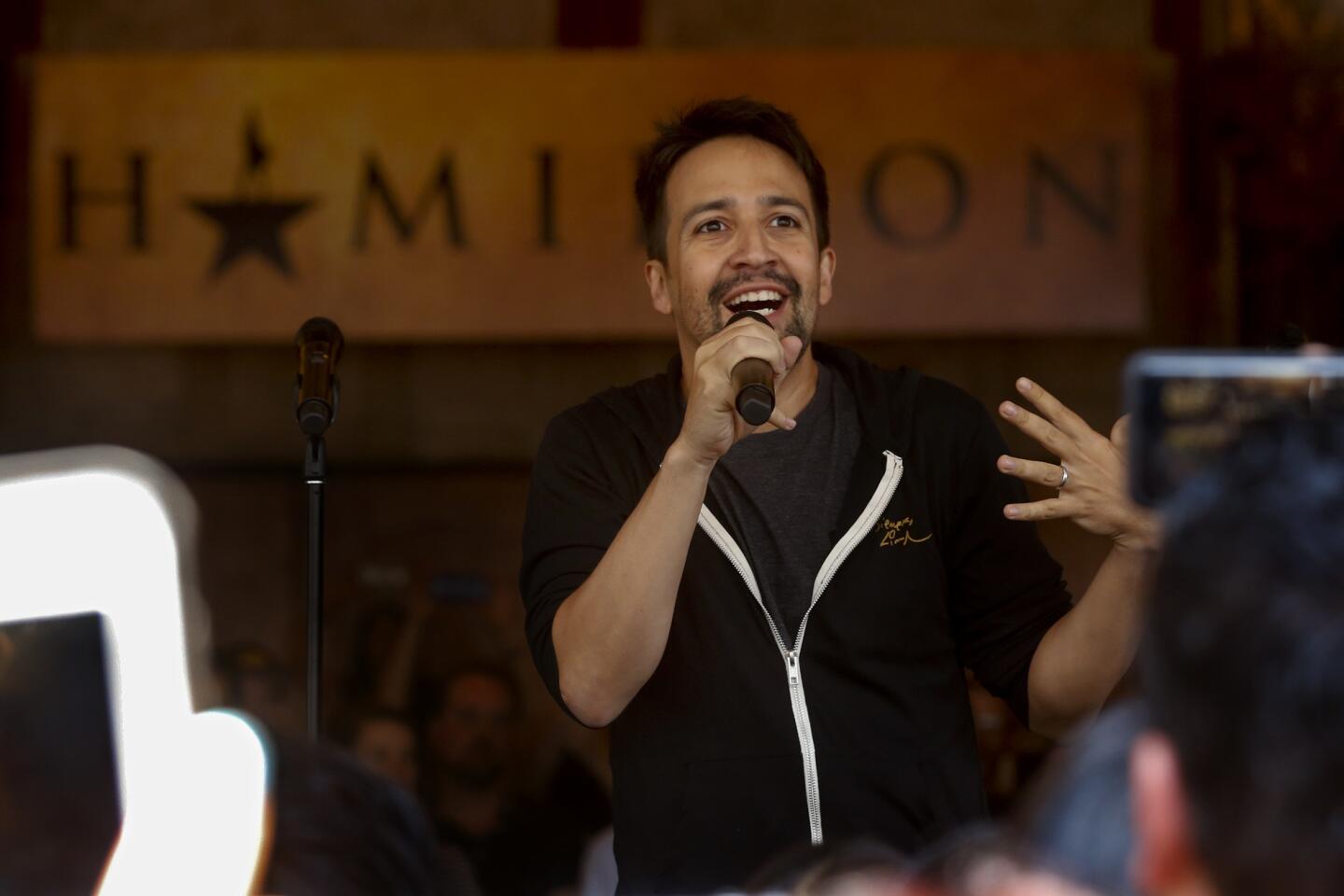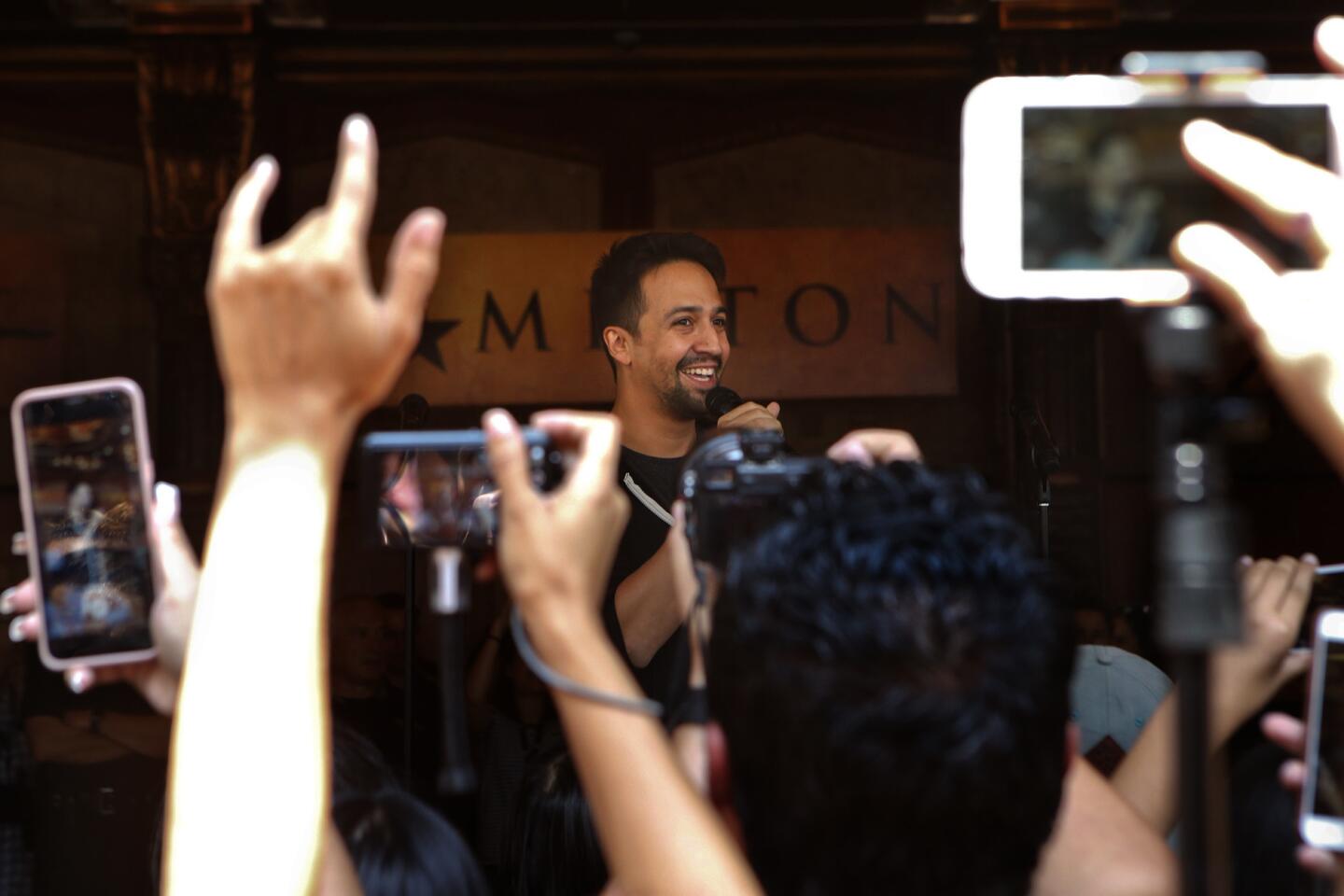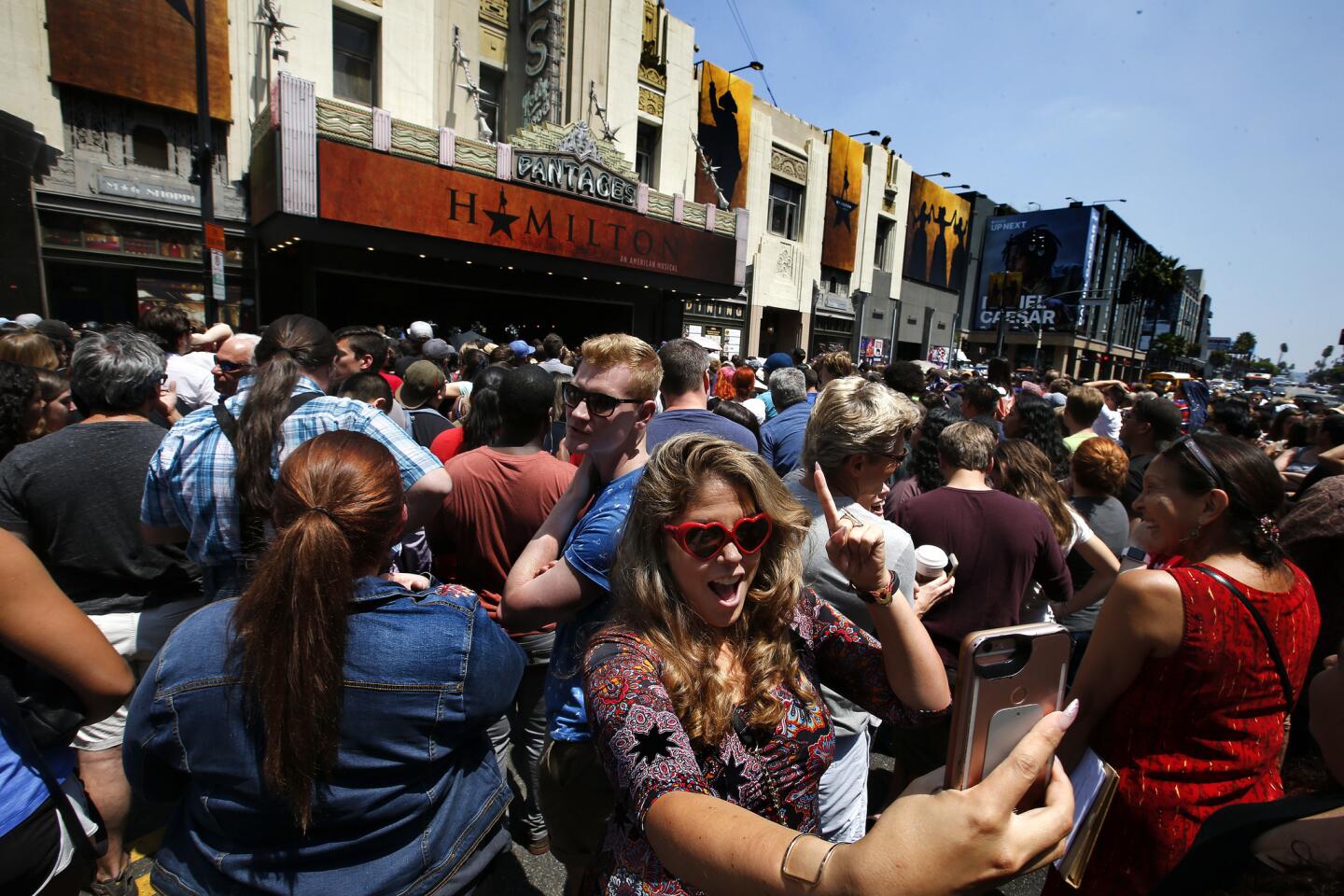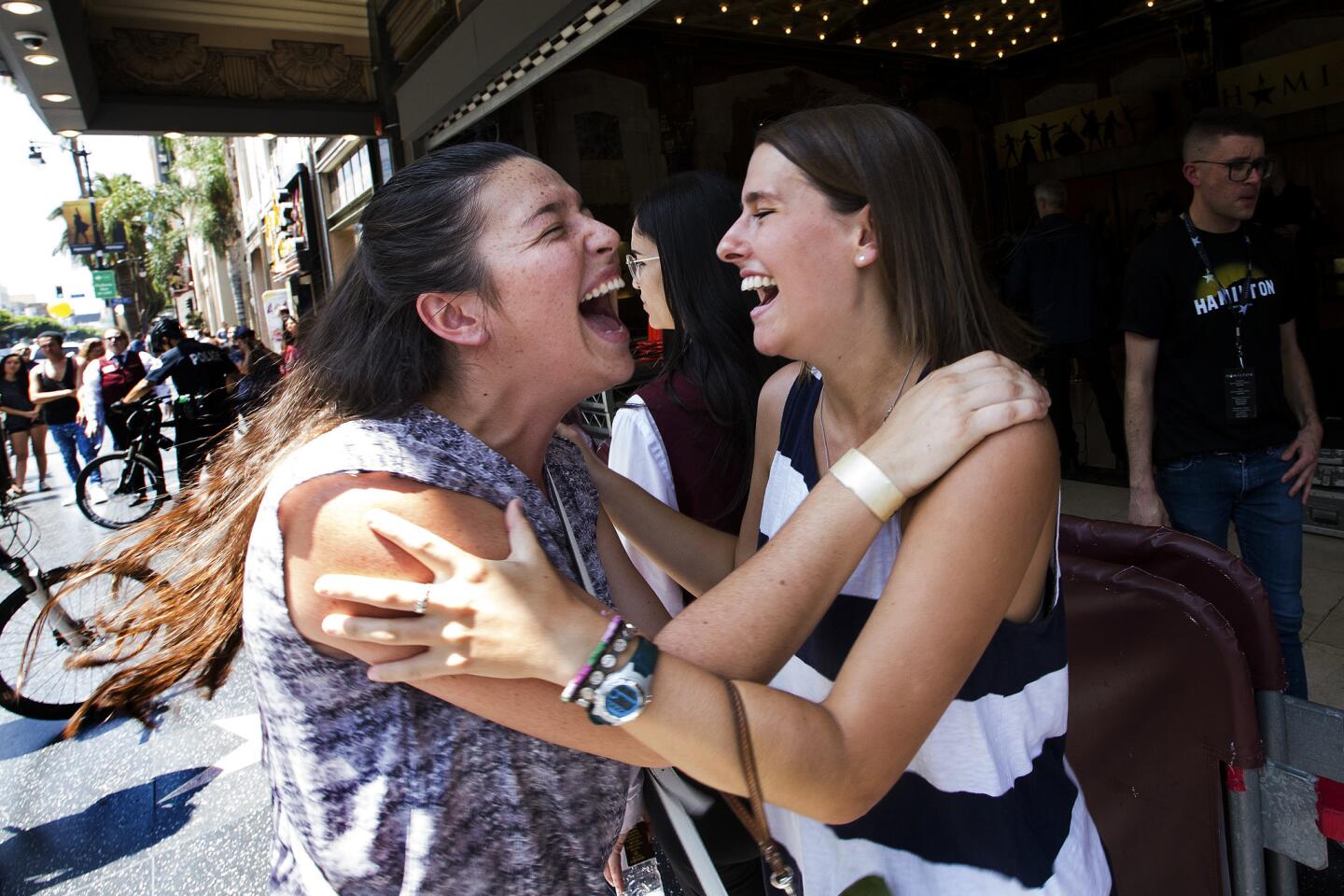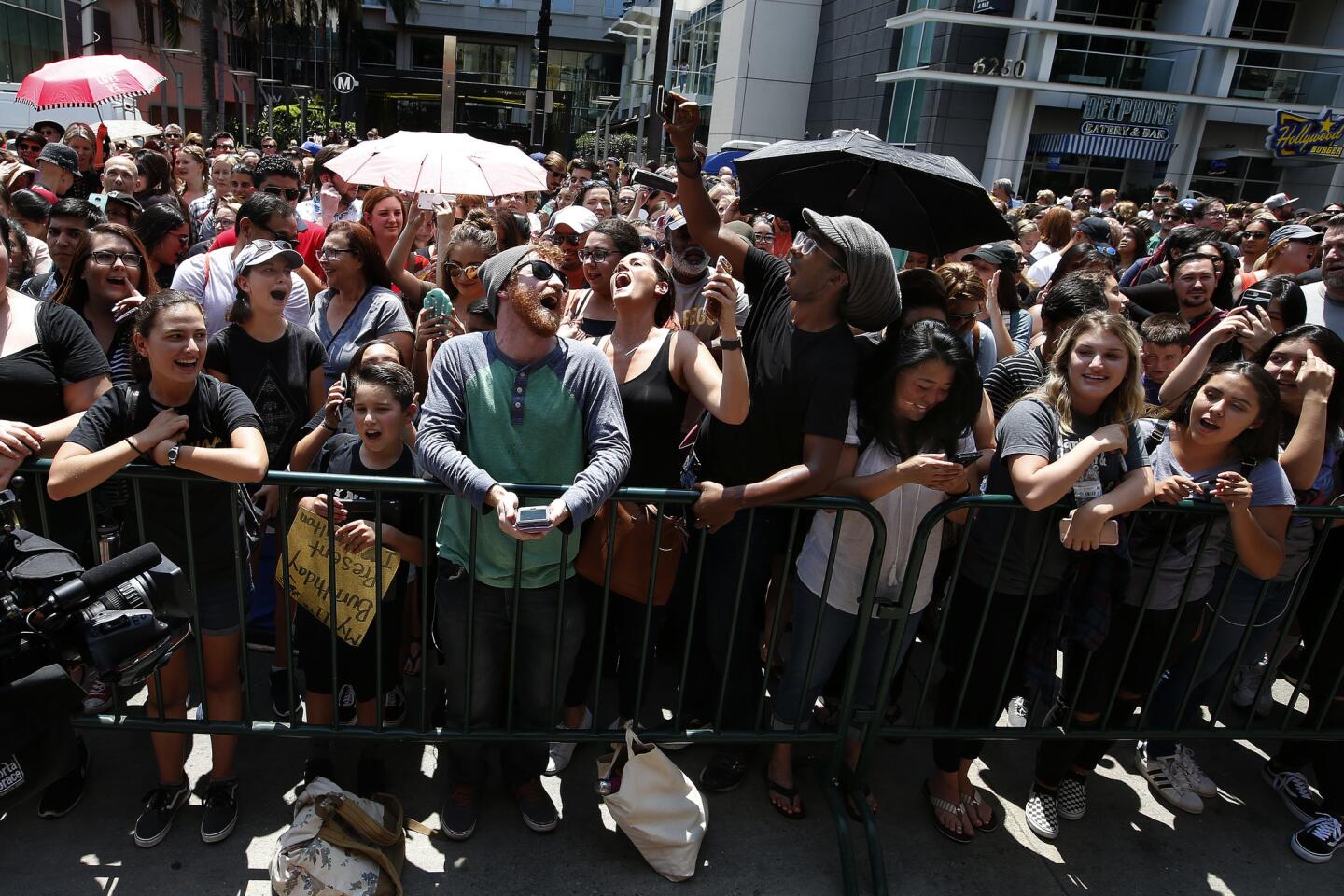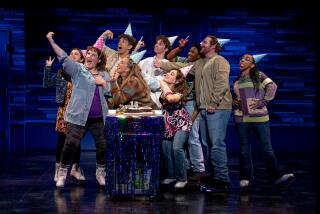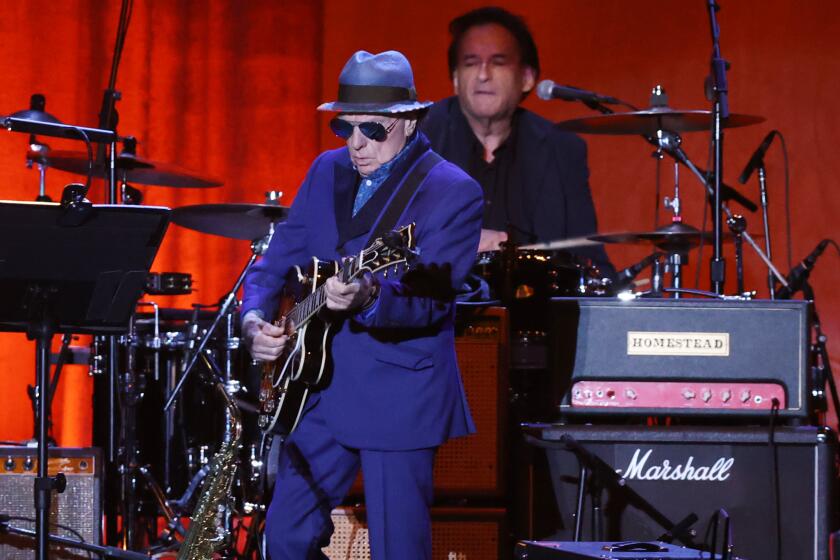‘Hamilton’ in L.A.: Think of the touring show as a remix of the Broadway smash
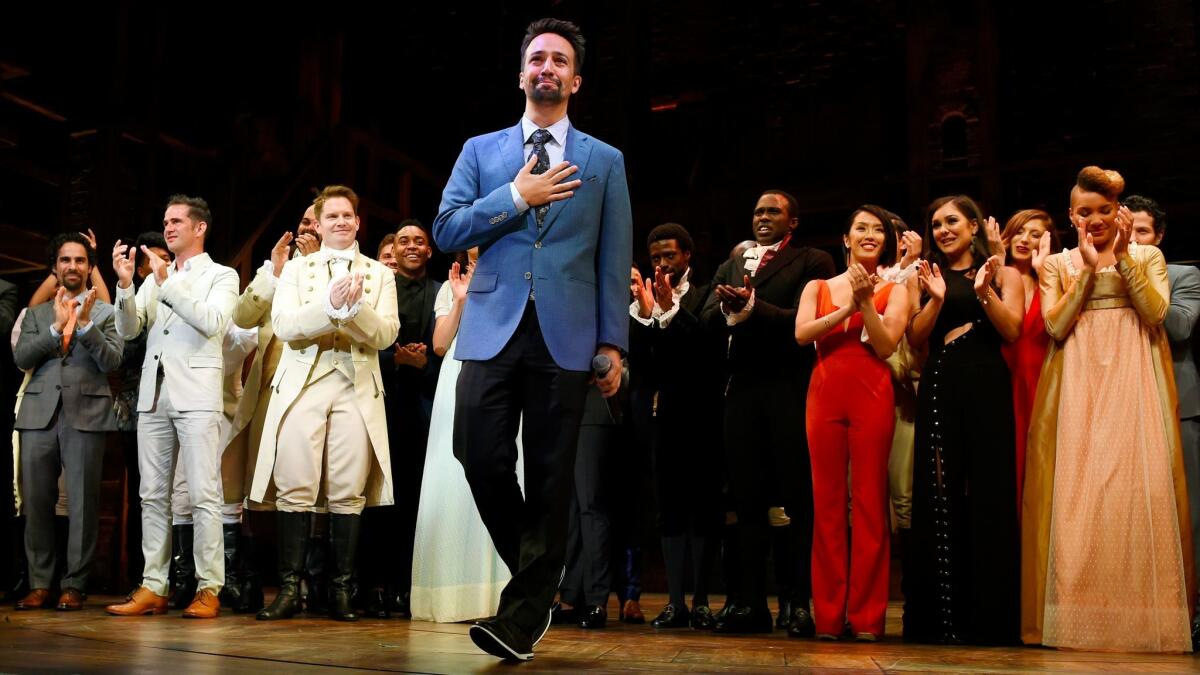
Two and a half years after it premiered off-Broadway, “Hamilton” finally reached Los Angeles last week when the touring edition of Lin-Manuel Miranda’s smash-hit musical opened Wednesday night at the Hollywood Pantages.
Fans of the Tony Award-winning show about America’s Founding Fathers probably felt as if they’d waited an eternity for “Hamilton” to get here. Yet the production itself seemed right on time.
Watching the mostly black and brown cast perform in the wake of the racially motivated violence in Charlottesville, Va., you couldn’t help but marvel at the grim prescience of Miranda’s thoughts on the precarious but necessary nature of American unity.
Then again, as a musical largely told through hip-hop, “Hamilton” has persistence and adaptability in its bones. So of course it still resonates; the thing was modeled on a form literally born from using old sounds to create new music.
Indeed, one way to think about the show’s tour, booked at the Pantages through the end of December, is as a remix of the Broadway production — an update that extends the life of the original, even as the original remains available to experience.
Sure, actor Michael Luwoye takes cues from Miranda’s Hamilton in his portrayal of the complicated title character, who as the first Treasury secretary laid the groundwork for the United States’ financial system. And yes, music director Julian Reeve’s pit band is playing the same charts as the ensemble in New York.
But in both cases — in the case of every member of the touring company — the artists in L.A. are putting their own spin on the material, remaking it according to their own ideas and outlooks.
A decade younger than Miranda, Luwoye gives the character a more brooding quality (perhaps because he’s also played Hamilton’s foe, Aaron Burr), while the Pantages band puts a deeper swing into the groove that underpins the so-called “Cabinet battles” in which Hamilton and Thomas Jefferson try to one-up each other with rhymes.
To some extent, these kinds of tweaks are simply what happens in a medium, like musical theater, rooted in performance rather than recording.
But because “Hamilton” is so closely identified with Miranda — he wrote the book, music and lyrics in addition to originating the title role — the leap seems more significant here, as though the members of the touring company weren’t just adjusting aspects of the musical but claiming it outright for themselves.
And that feels about as hip-hop as can be.
As even outsiders likely know, the genre largely began in New York in the 1970s when DJs started making songs by sampling instrumental parts from other records. Not just obscure records, either — ones a DJ might reasonably expect his or her audience not to know — but huge hits, such as Chic’s “Good Times,” whose indelible bass line was borrowed by the Sugarhill Gang for the seminal “Rapper’s Delight.”
Decades later, that custom runs so deep that it’s folded in on itself, with rappers putting out gray-market mixtapes featuring fresh verses atop beats that likely felt familiar the first time they appeared.
This was part of “Hamilton” long before the show spawned an on-the-road remix.
Miranda has said frequently that in Hamilton’s story — that is, in the tale of a prodigious writer who uses words to raise himself from his humble origins — he recognized the narrative arc of an MC such as Jay-Z or the Notorious B.I.G. (In 1998, the former may have predicted “Hamilton’s” blend of hip-hop and Broadway with “Hard Knock Life (Ghetto Anthem),” which repurposed the original cast recording of “Annie.”)
And his songs are full of sonic and lyrical references to earlier tracks by the likes of Mobb Deep and Busta Rhymes.
Those knowing callbacks help “Hamilton” get the texture of hip-hop right; they contribute to a musical depiction far more convincing than, say, “La La Land,” which has such naive ideas about the spirit of jazz — about how that genre thinks about tradition and innovation — that you wondered if the filmmakers had ever spoken to a jazz musician.
A giver as well as a taker, Miranda clearly wants to build this type of replicability into his music — to encourage artists to do with his songs what he’s done with others’. Last year he put together “The Hamilton Mixtape,” an impressive collection of interpretations, some pretty liberal, of “Hamilton’s” key numbers by acts including Nas, Usher, Kelly Clarkson, Ashanti and Chance the Rapper.
That mixtape, by the way, debuted on Billboard’s album chart at No. 1, which highlights something else “Hamilton” shares with hip-hop: the ambition to be part of the cultural conversation (or to be in the room where it happens, as one song from the musical memorably puts it).
Show tunes have enjoyed plenty of life off the stage and screen in recent years, whether from “Wicked” or “Spring Awakening” or especially “Frozen,” whose blockbuster soundtrack came this close to beating Taylor Swift’s “1989” as the biggest-selling album of 2014.
And you can tell that real-world attention is important to Miranda. For “Hamilton’s” cast album he enlisted the Roots to help him overhaul the music in a way that would make it stand up to what’s on pop and rap radio.
They did nice work: Even at its most densely packed, the set has a warmth and bounce rare among cast recordings, which are often hastily recorded in a single day. Commercially, too, the triple-platinum “Hamilton” album has racked up uncommon numbers.
That said, it’s too early to know if the songs will truly stick around; at this point the enthusiasm seems still to be bound up in the show itself, particularly as audiences around the country continue to see “Hamilton” for the first time.
It will be curious to see what happens in a few years, after the tour has ended and the musical has perhaps become a treasured centerpiece of high-school theater programs.
Will some 10th-grade rapper crib a lyric of Miranda’s as Miranda did a line from Biggie’s “Juicy”? Or will he or she sample “The Room Where It Happens” as Jay-Z did “Annie”?
For Miranda the hip-hop head, it’s hard to imagine a more gratifying success.
Twitter: @mikaelwood
ALSO
‘It’s part of our DNA’: How California shaped the music of L.A.’s Haim
What Sam Hunt had to say about cultural integration at the Greek Theatre
From sex bomb to philosopher: How Neil Diamond celebrated 50 years in show business
More to Read
The biggest entertainment stories
Get our big stories about Hollywood, film, television, music, arts, culture and more right in your inbox as soon as they publish.
You may occasionally receive promotional content from the Los Angeles Times.
